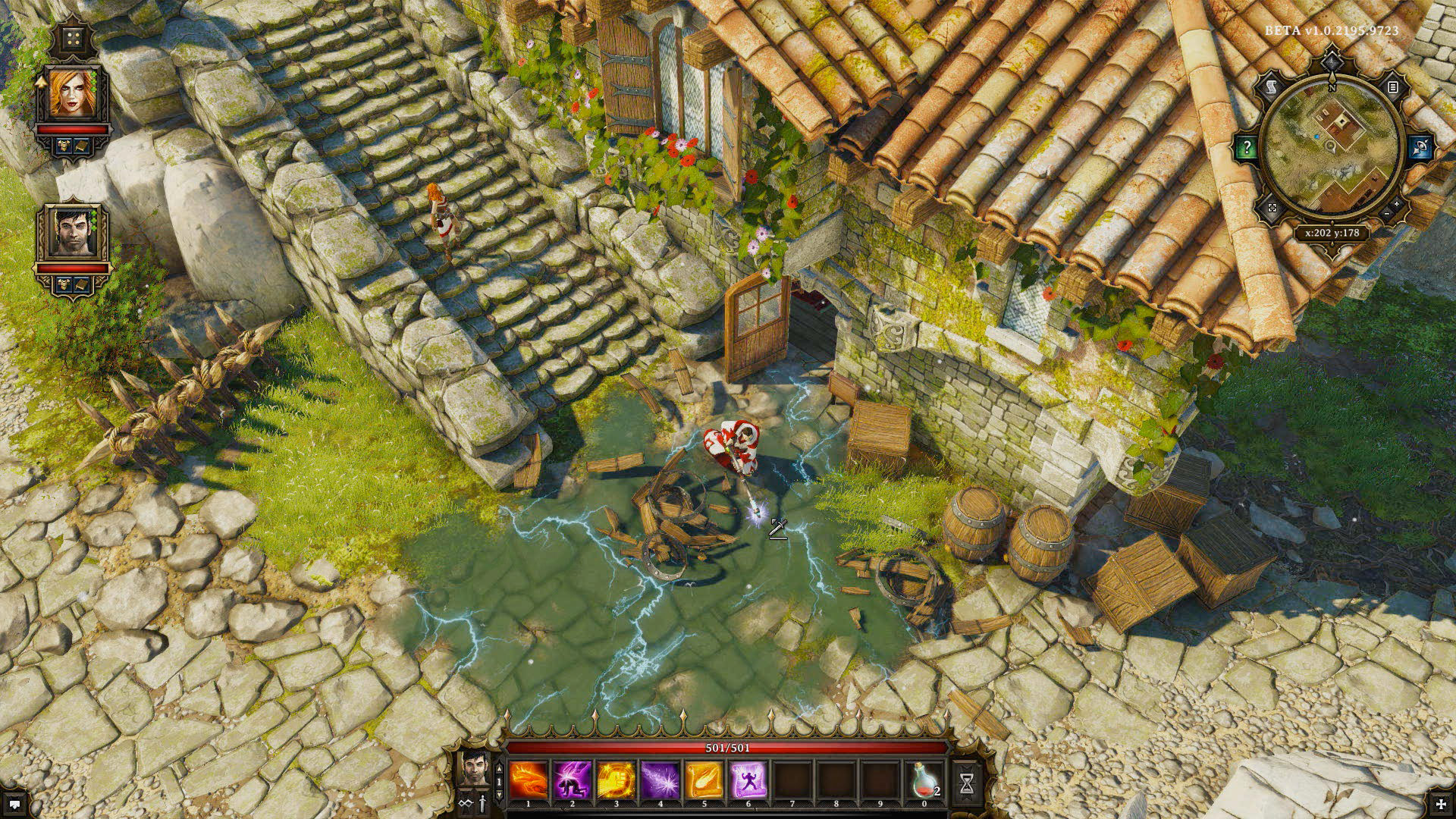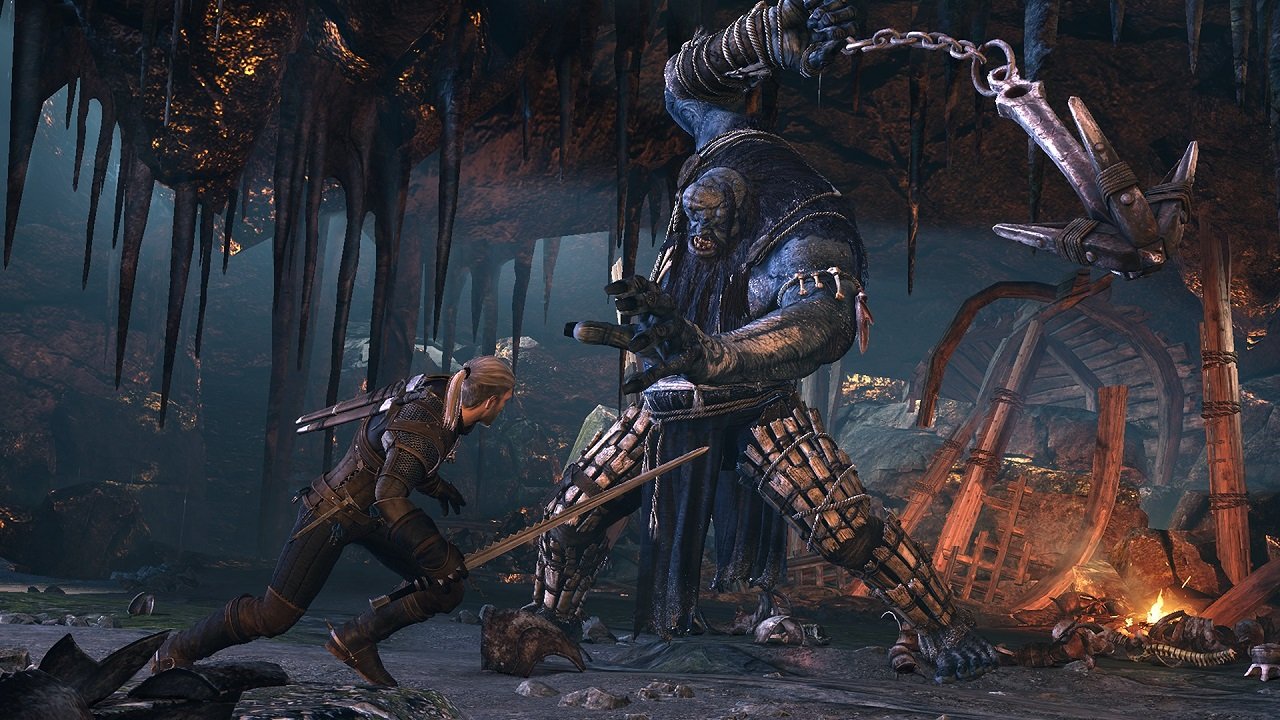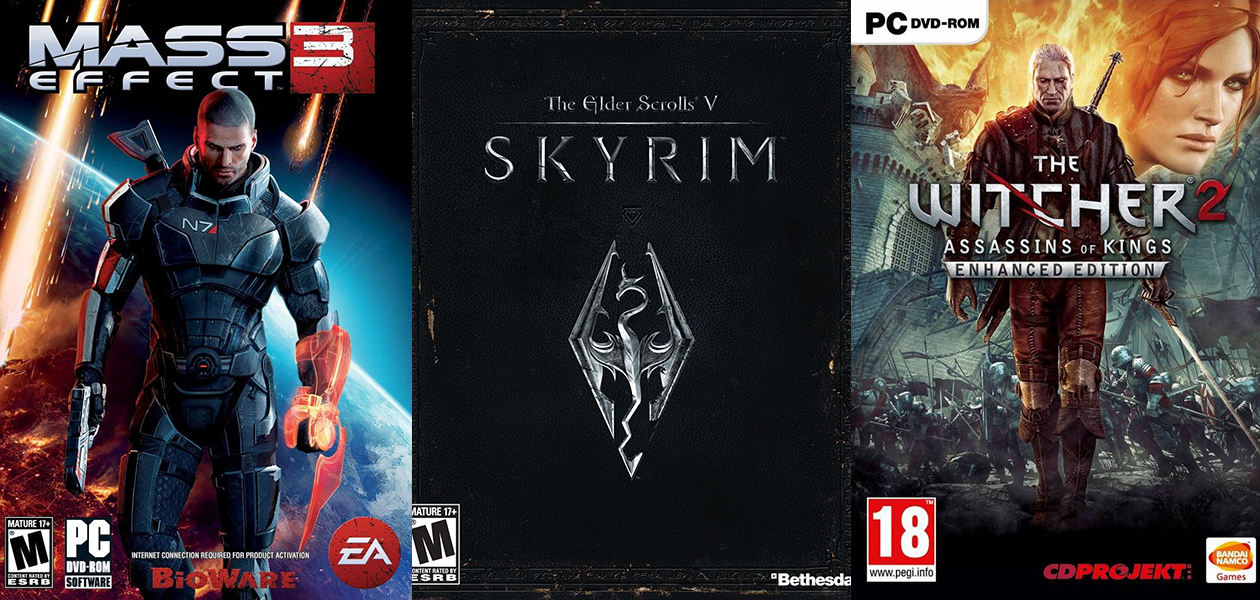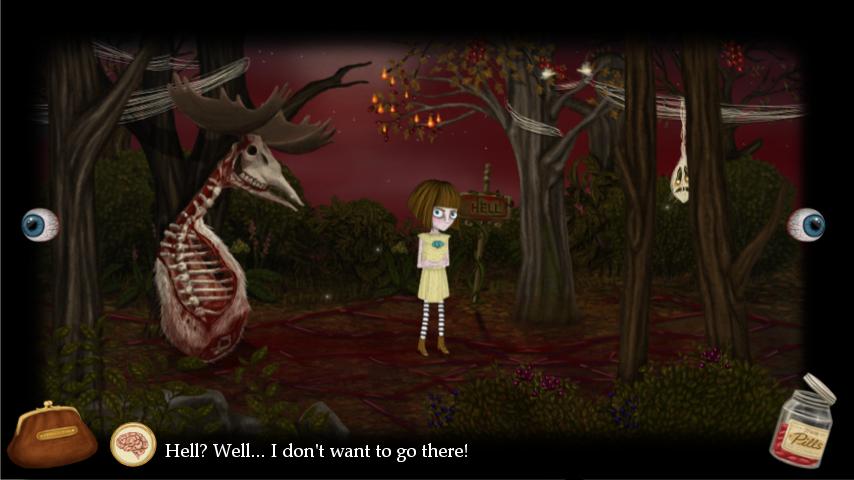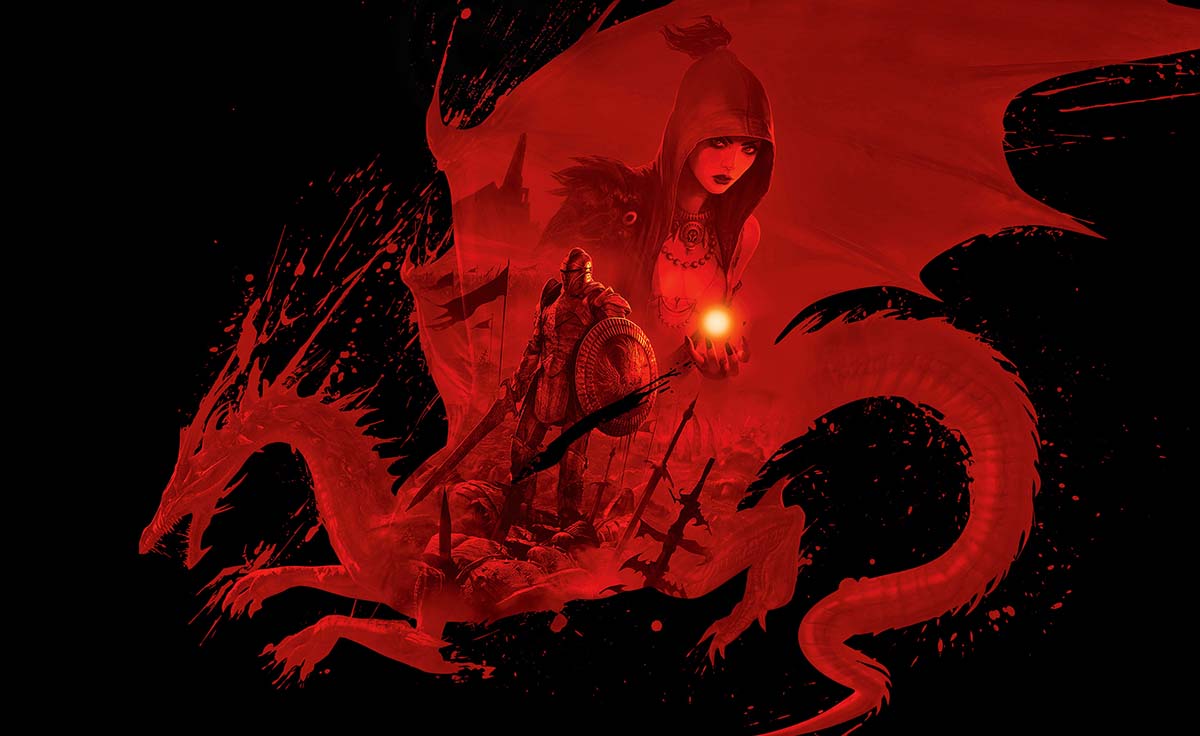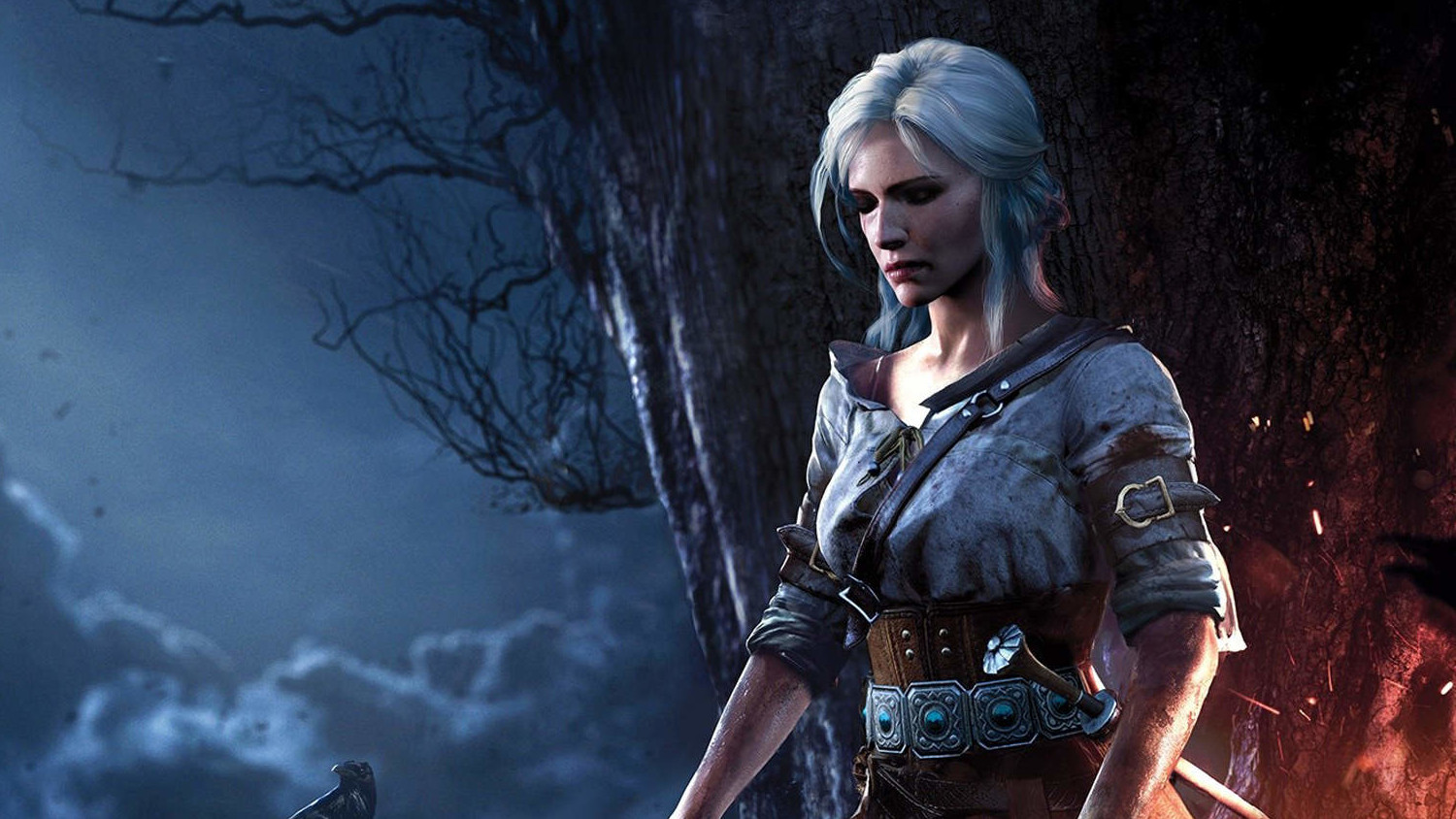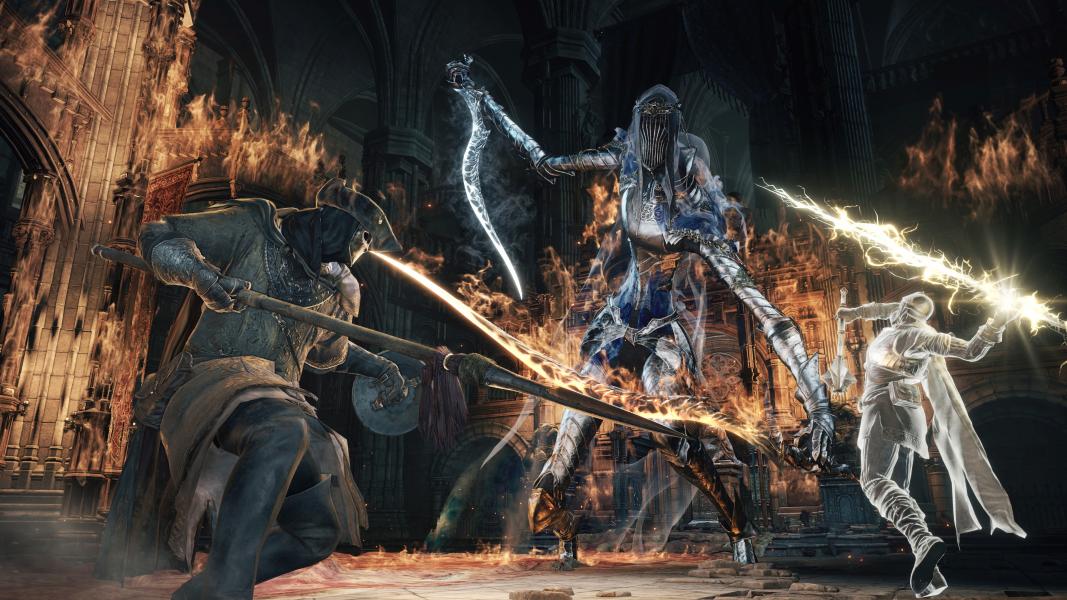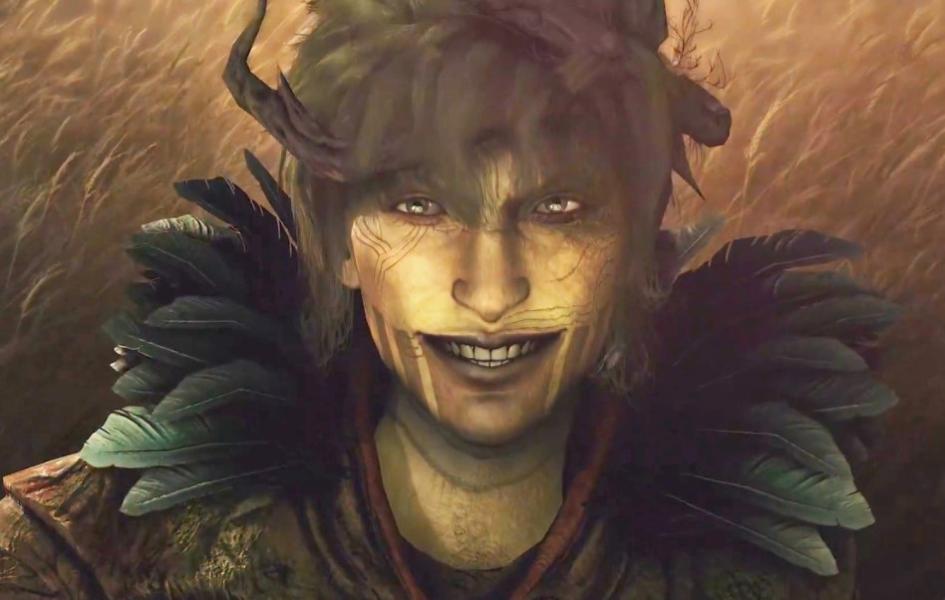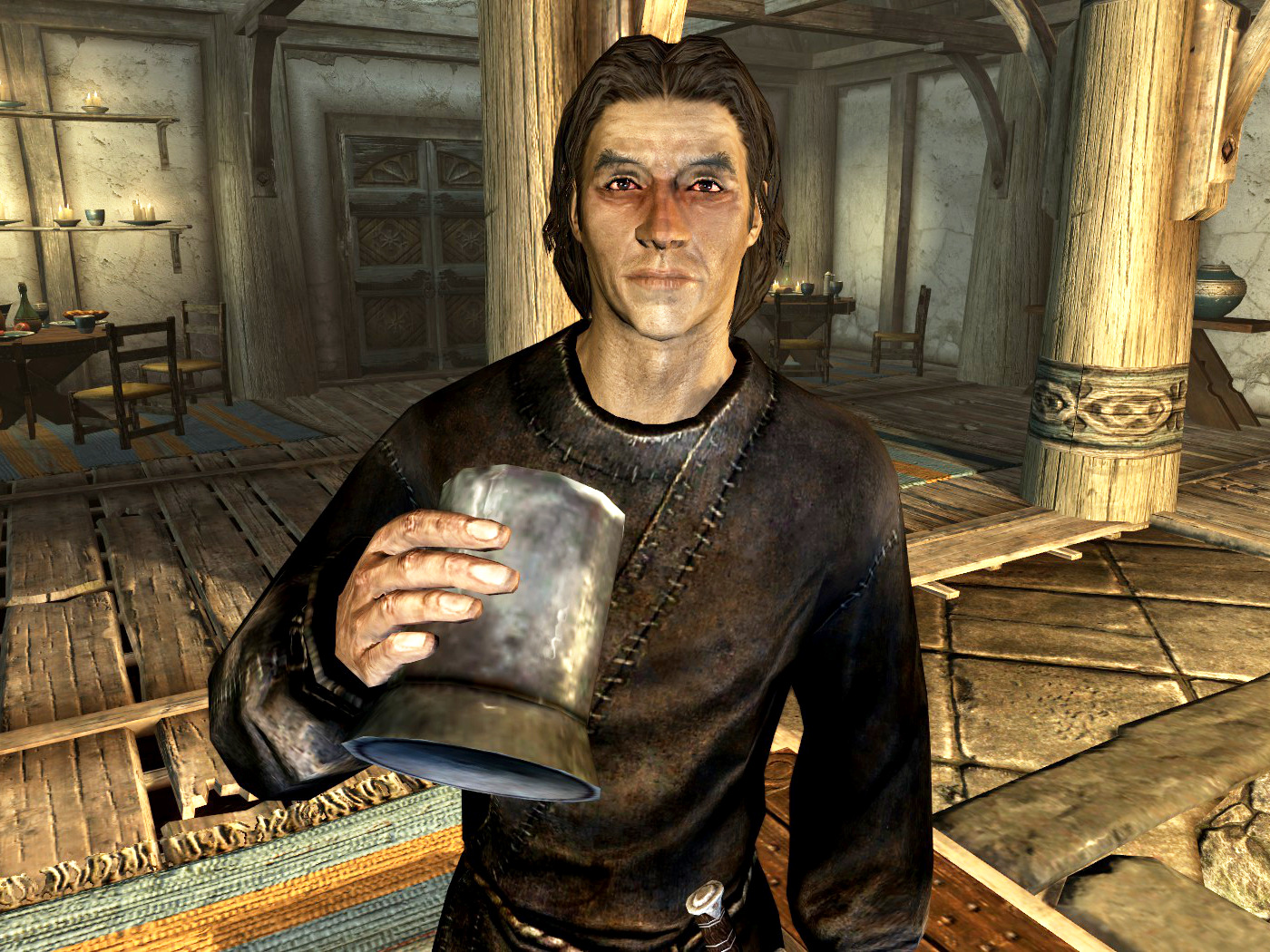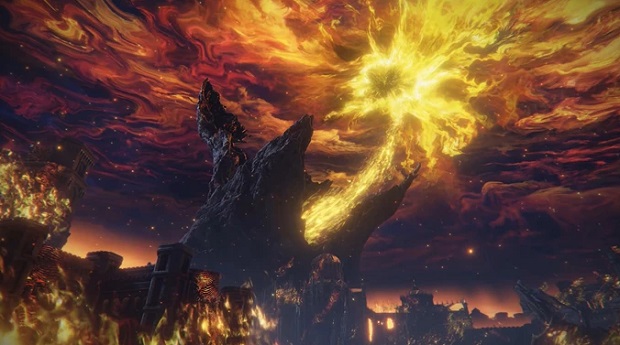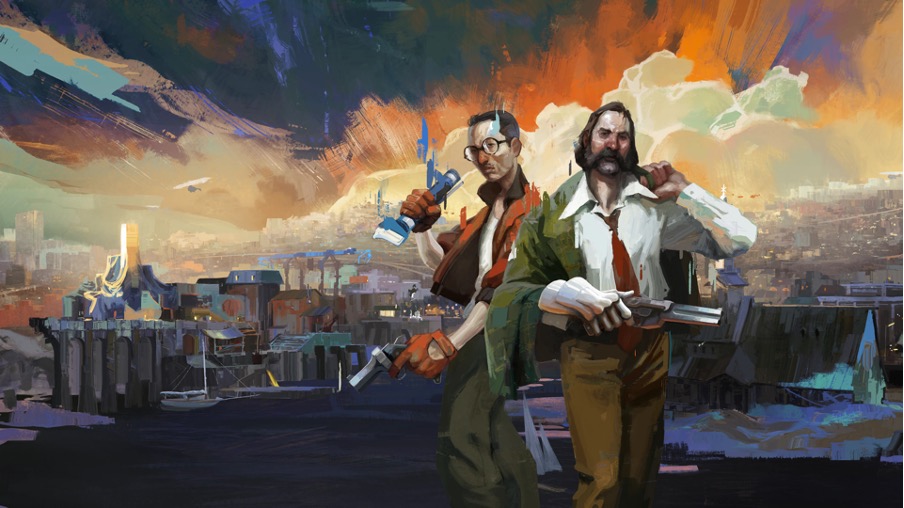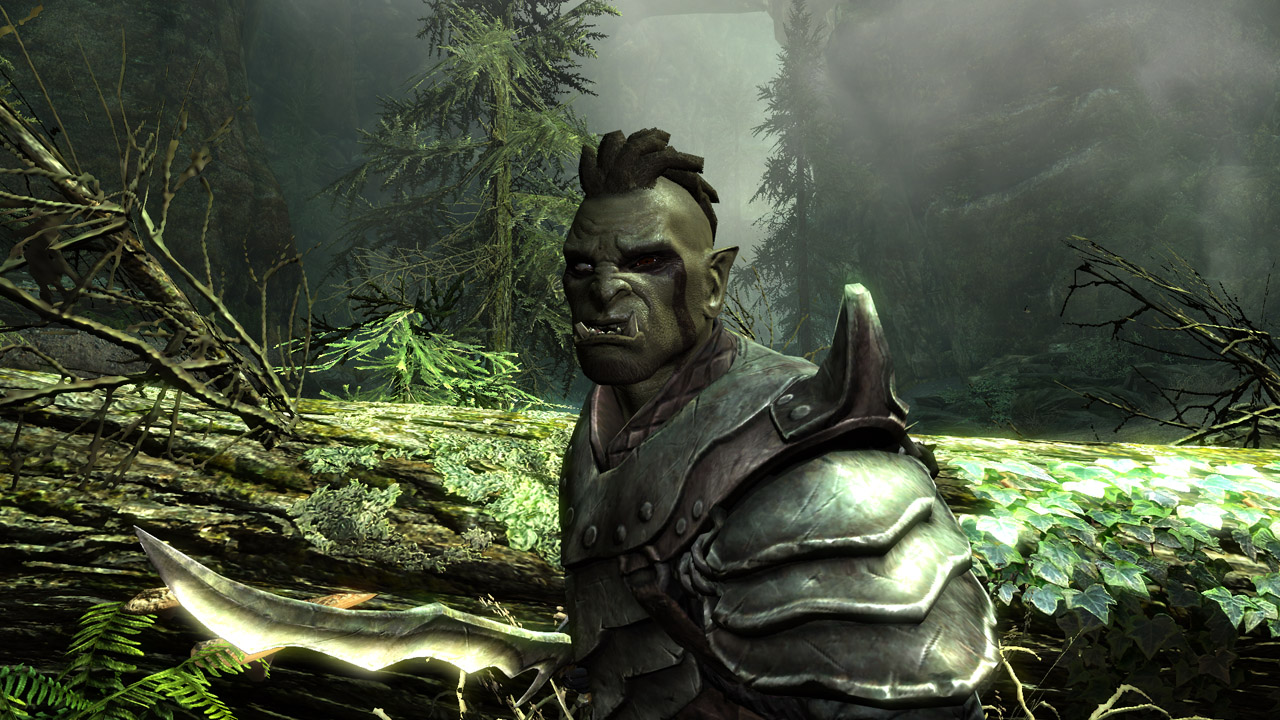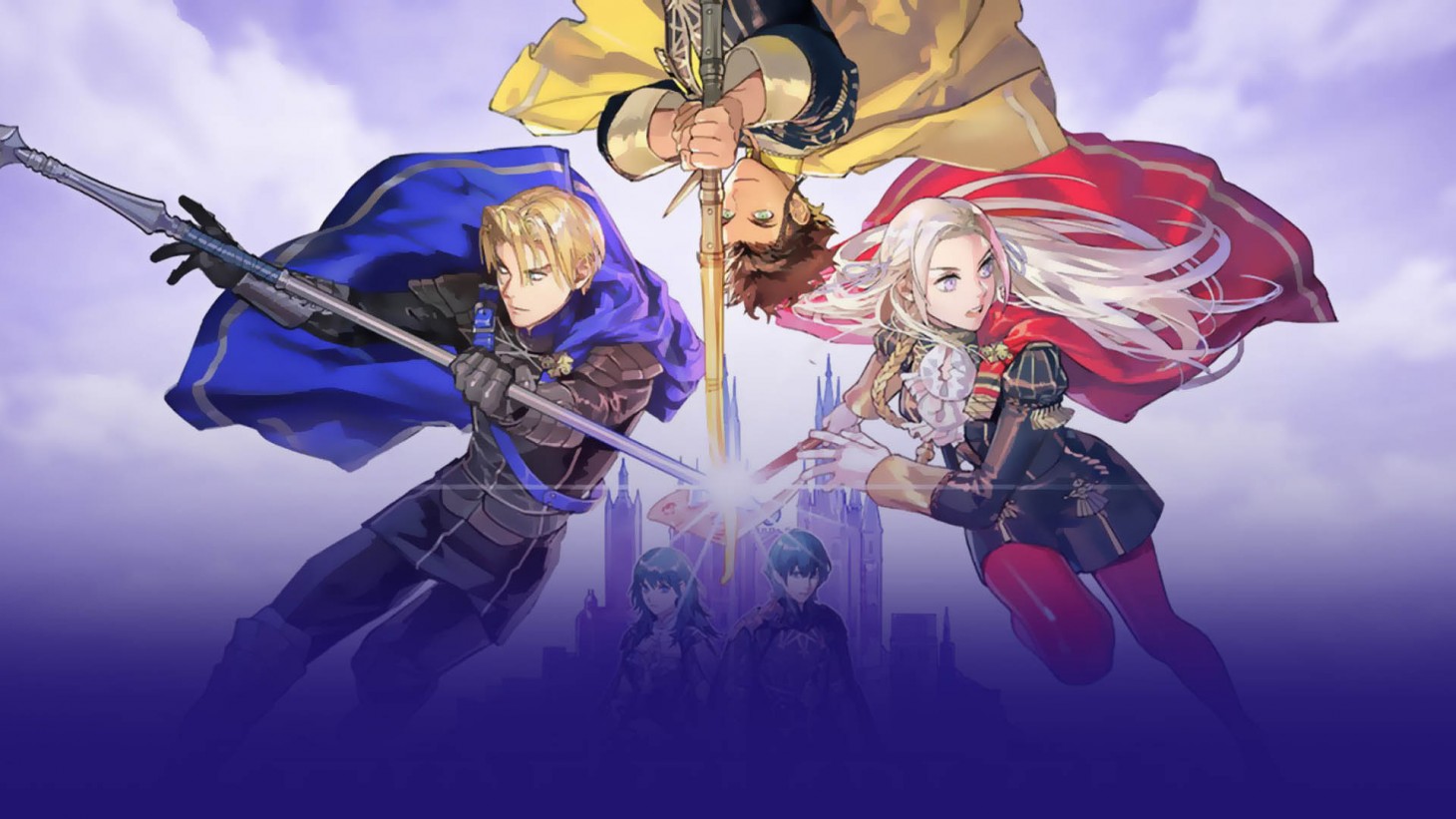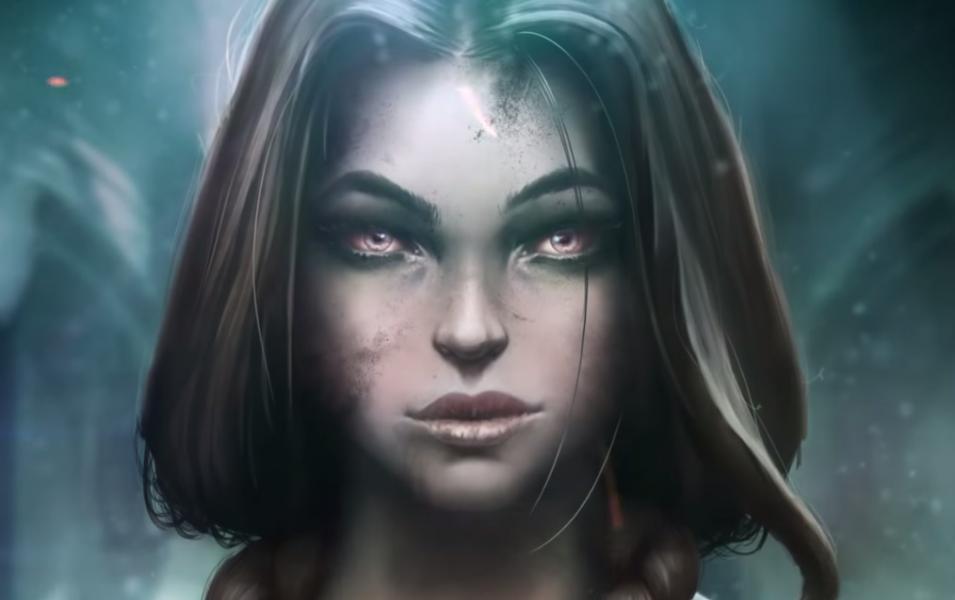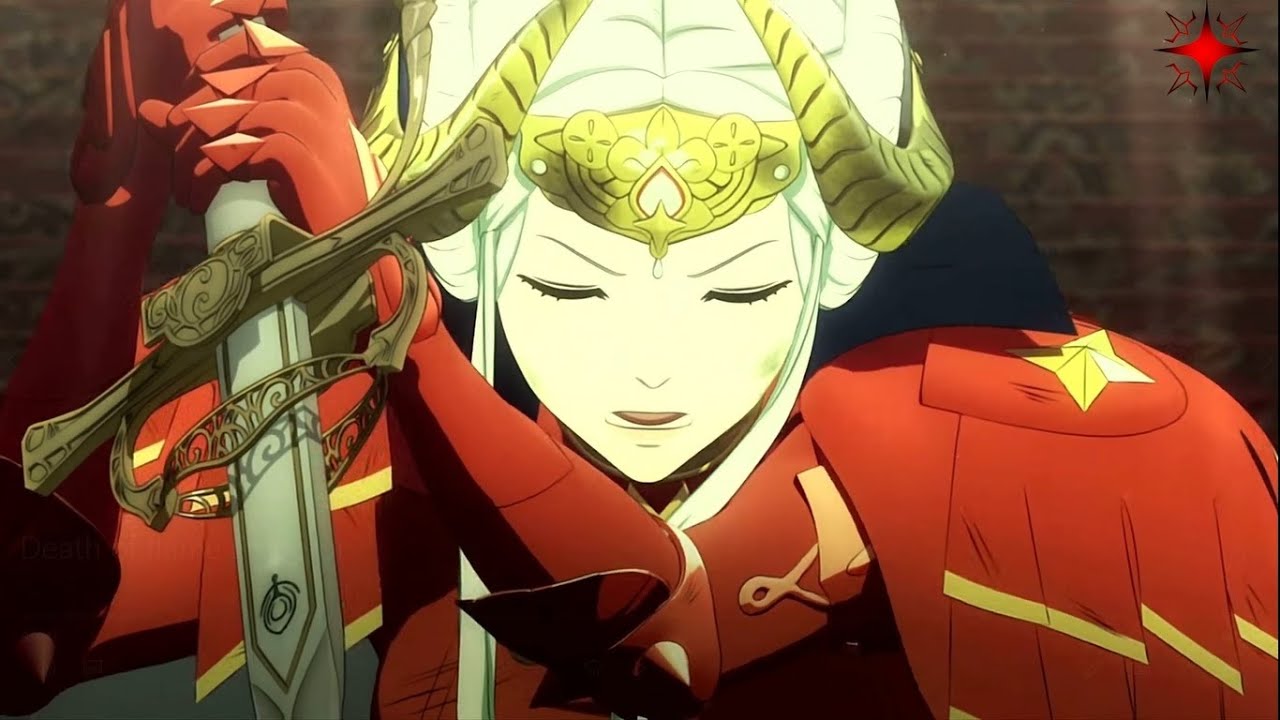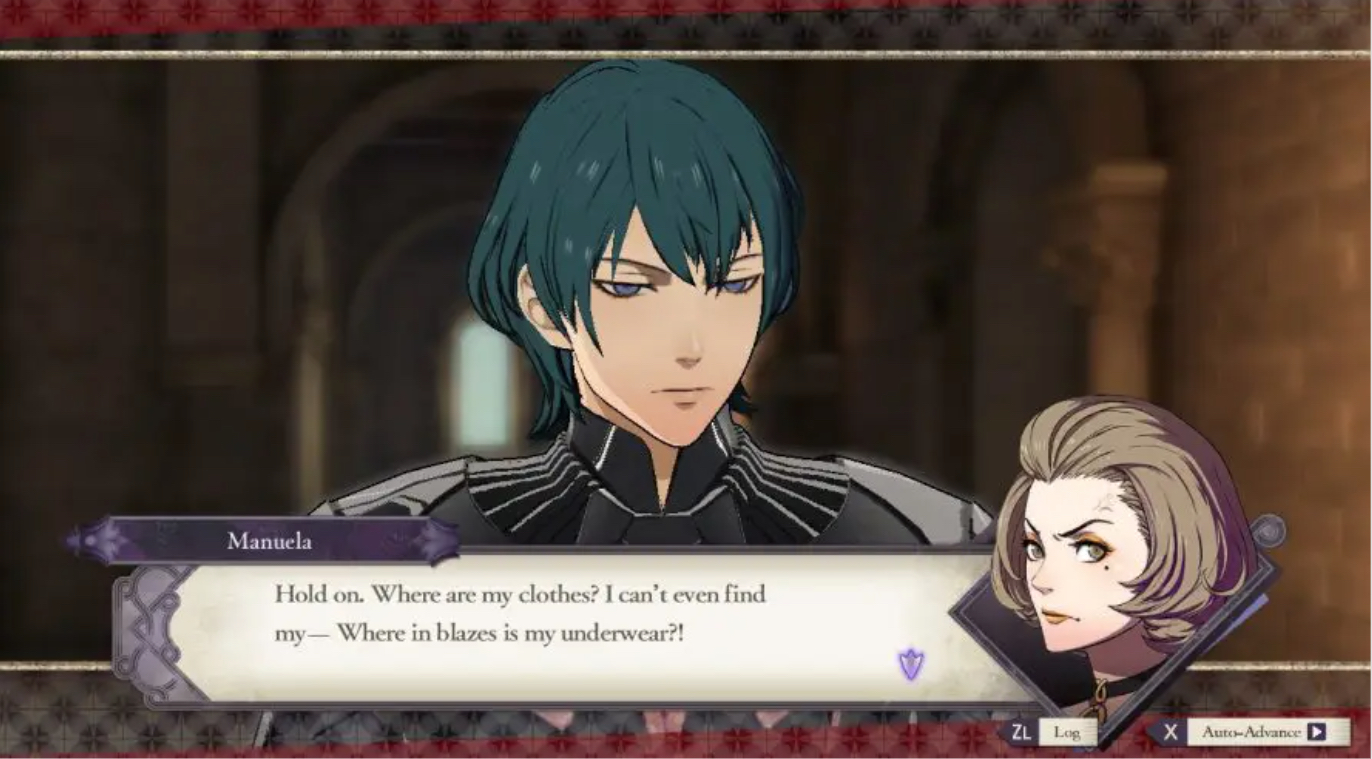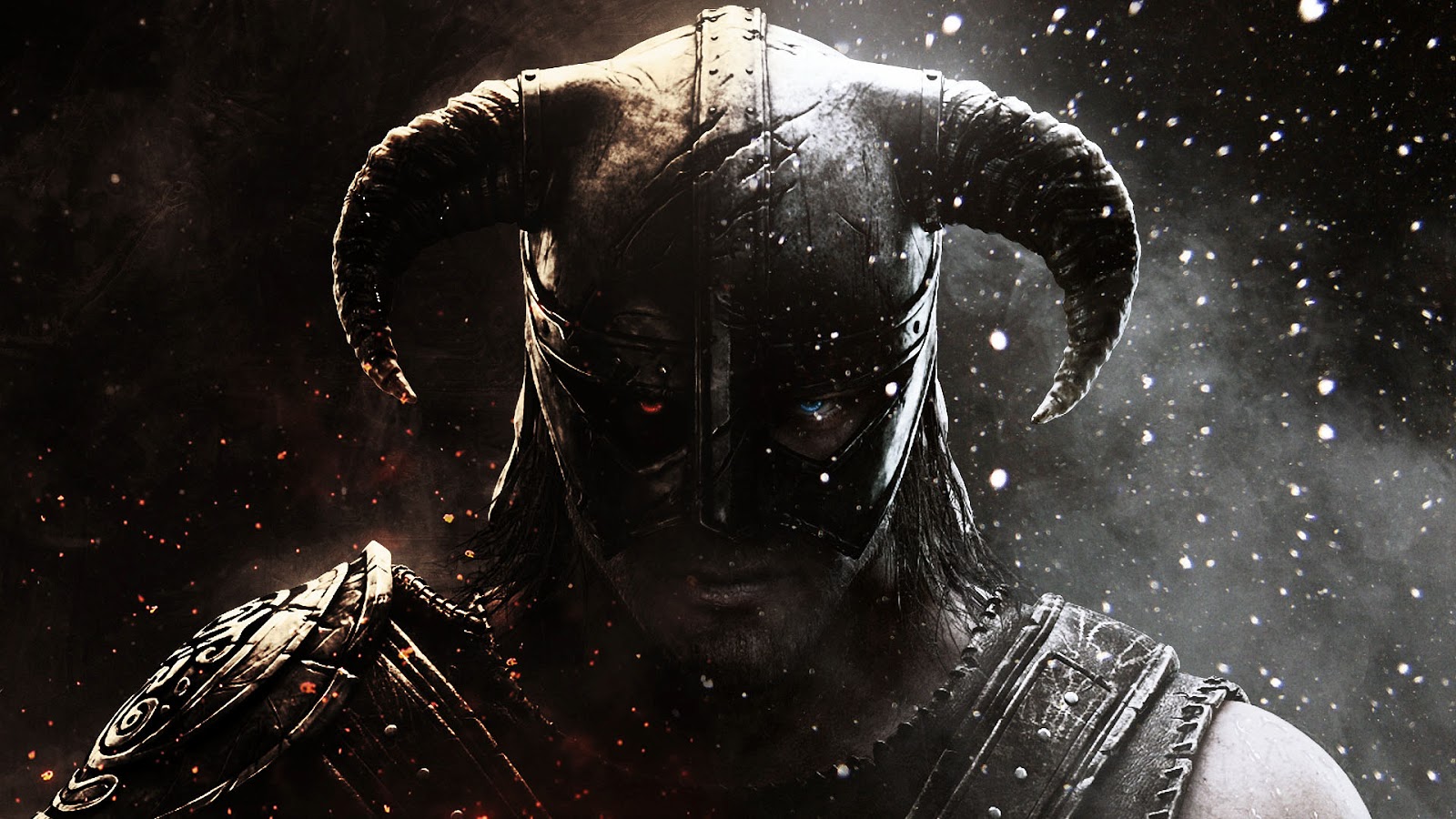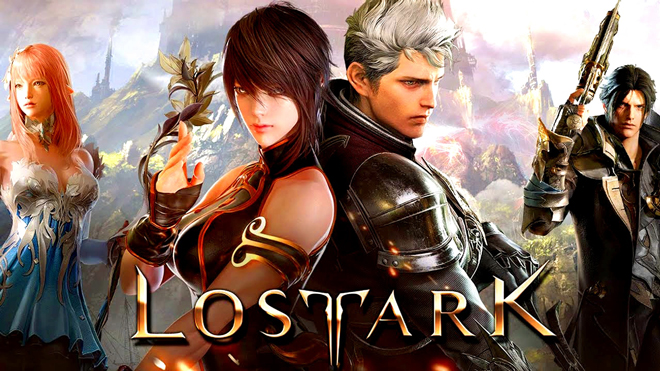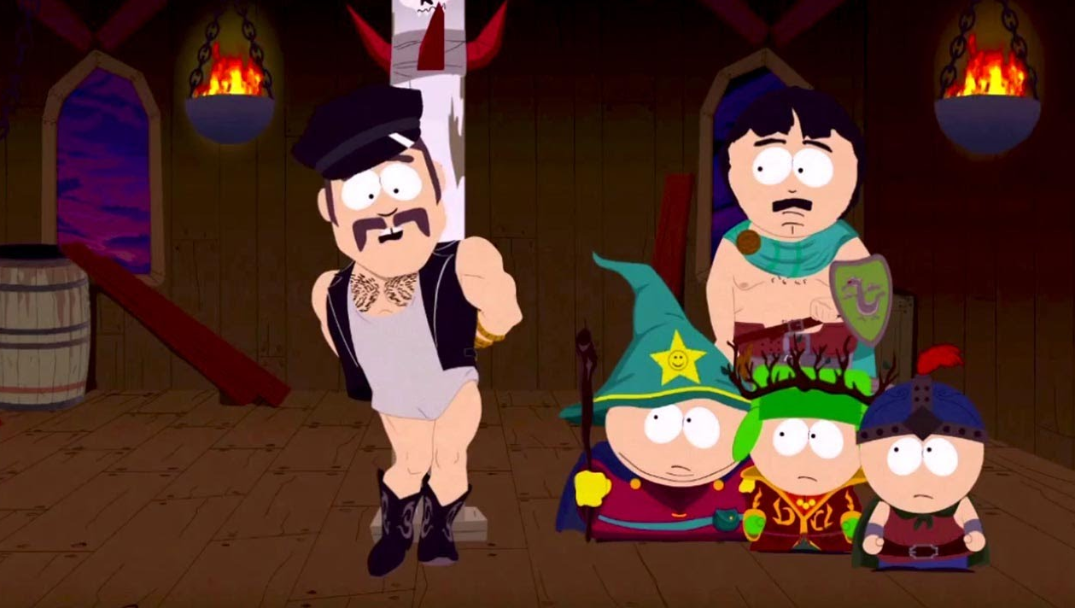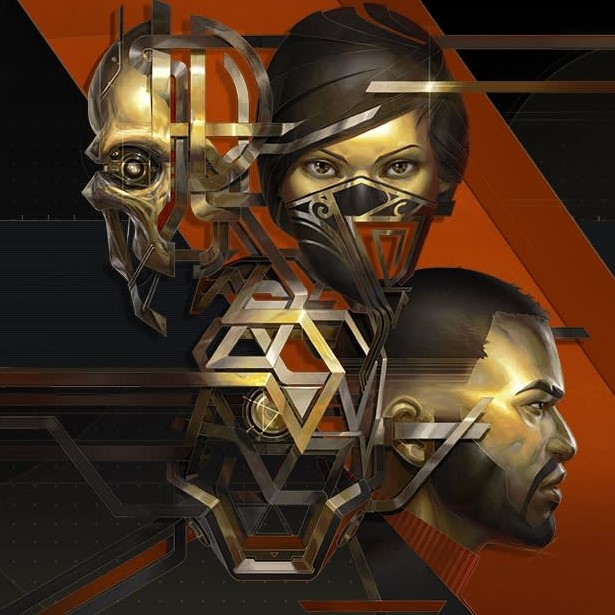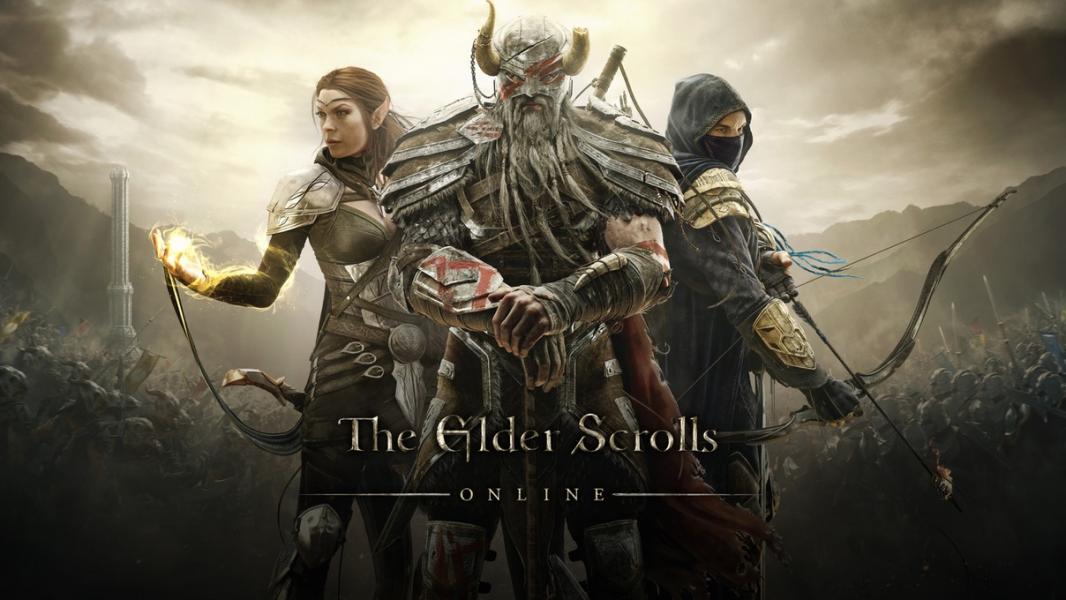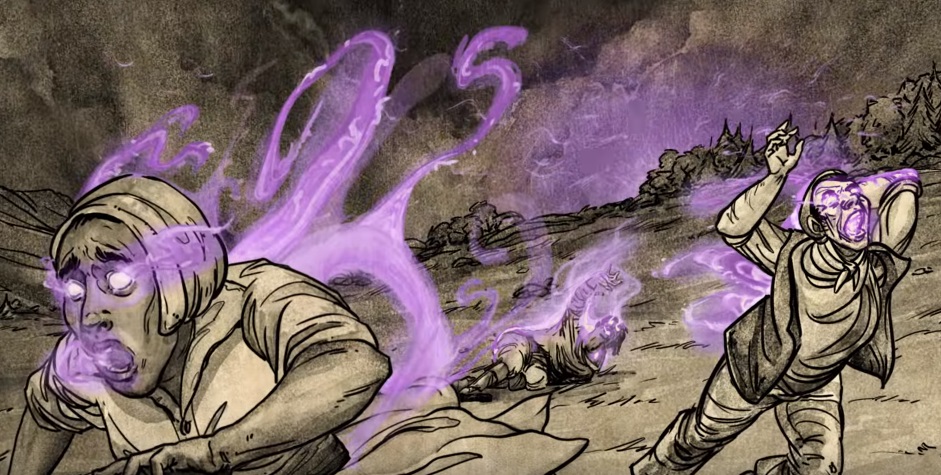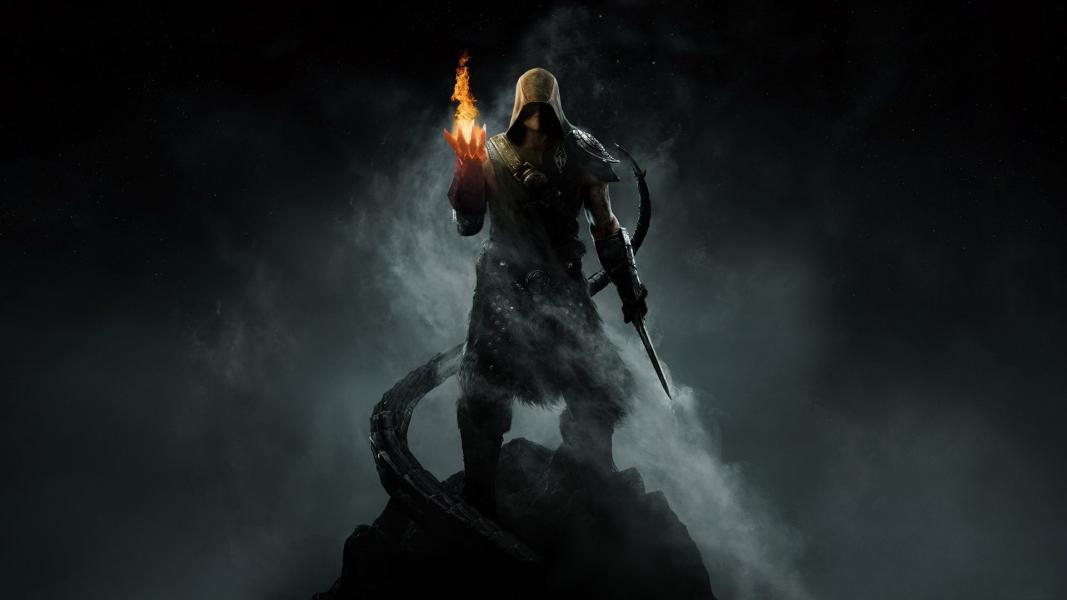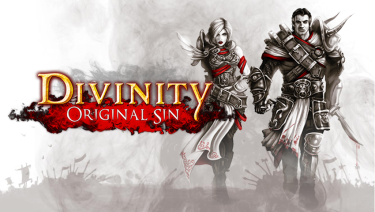
Introduction
Anyone who walks out that door is in for a shock.
Divinity Original Sin is the kind of RPG that many of RPG fans thought they would never see again; and I’m not referring to the isometric perspective, or the turn-based combat system. Both of those features, while missed, were quite low on the hierarchy compared to what we really wanted: Roleplaying.
Those of us who grew up on the likes of Baldur’s Gate, Neverwinter Nights, and Ultima VII developed a very different concept of roleplaying to what is often understood by the term today. To us, roleplaying is not about stepping into a predefined character who follows a more-or-less predetermined path containing far more cinematics and quicktime events than it does genuine choices. Nor is it about being led by the hand by sparkling breadcrumb trails to the next thing the game wants us to do, see, or interact with.
No, when codgers like us think “roleplaying game” we think of a game that gives us a robust character creator, a bit of an intro to the world and it story, and then promptly lets us get on with the business of figuring things out ourselves.
Original Sin is that game.
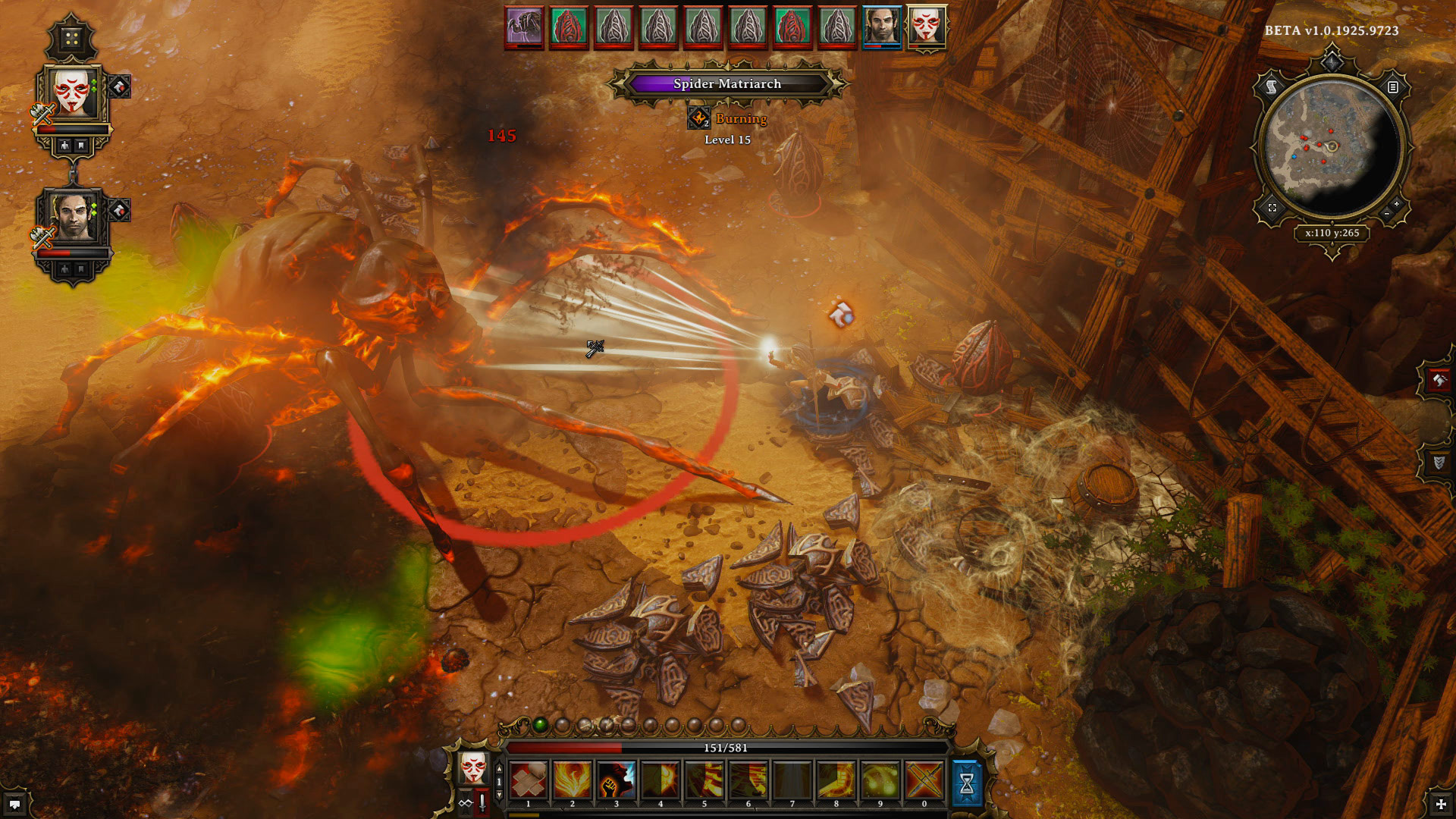
Aracnophobics beware…
Story
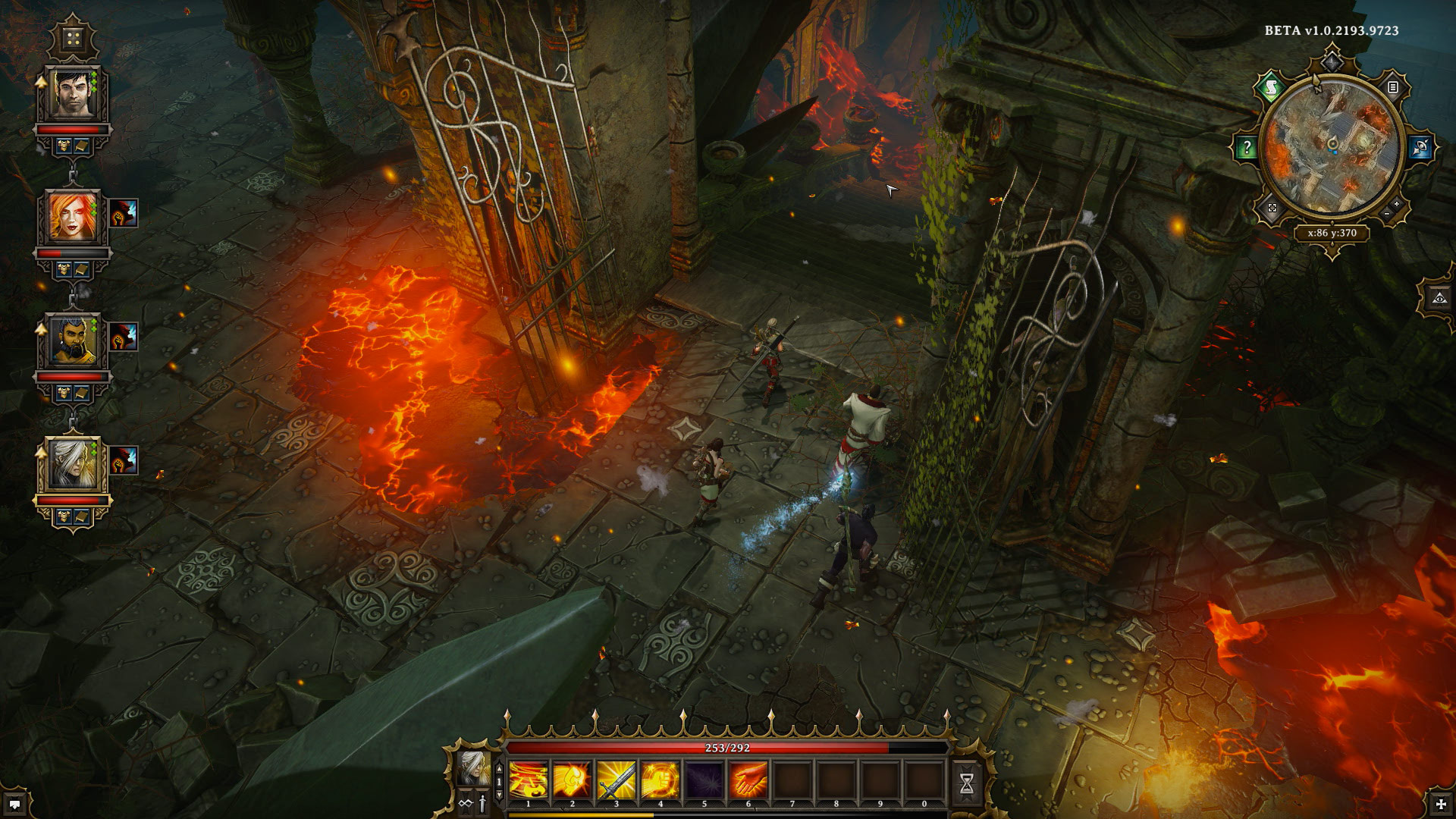
An infernal road lies ahead.
Original Sin kicks off with a brief preamble about a town councillor’s death; a death that was apparently due to a corrupt form of magic known as “Source.” A concerned mage by the name of Arhu has summoned a pair of Source Hunters—warriors tasked with hunting down practitioners of Source magic—to get to the bottom of the murder, and to root out any “Sourcerers” they find there.
You will fill the shoes of one (or both, if you’re not playing cooperatively) of these intrepid Source Hunters as they arrive on the sun-and-blood-drenched beaches of Cyseal. Overtly, your task is to track down a murderer, but how you go about that is completely up to you. And with invading orcs arriving by the boatload—not to mention the undead hordes waiting hungrily for a Cyseal citizen to step outside of the protection of the town’s magical ballistae—there are plenty of distractions.
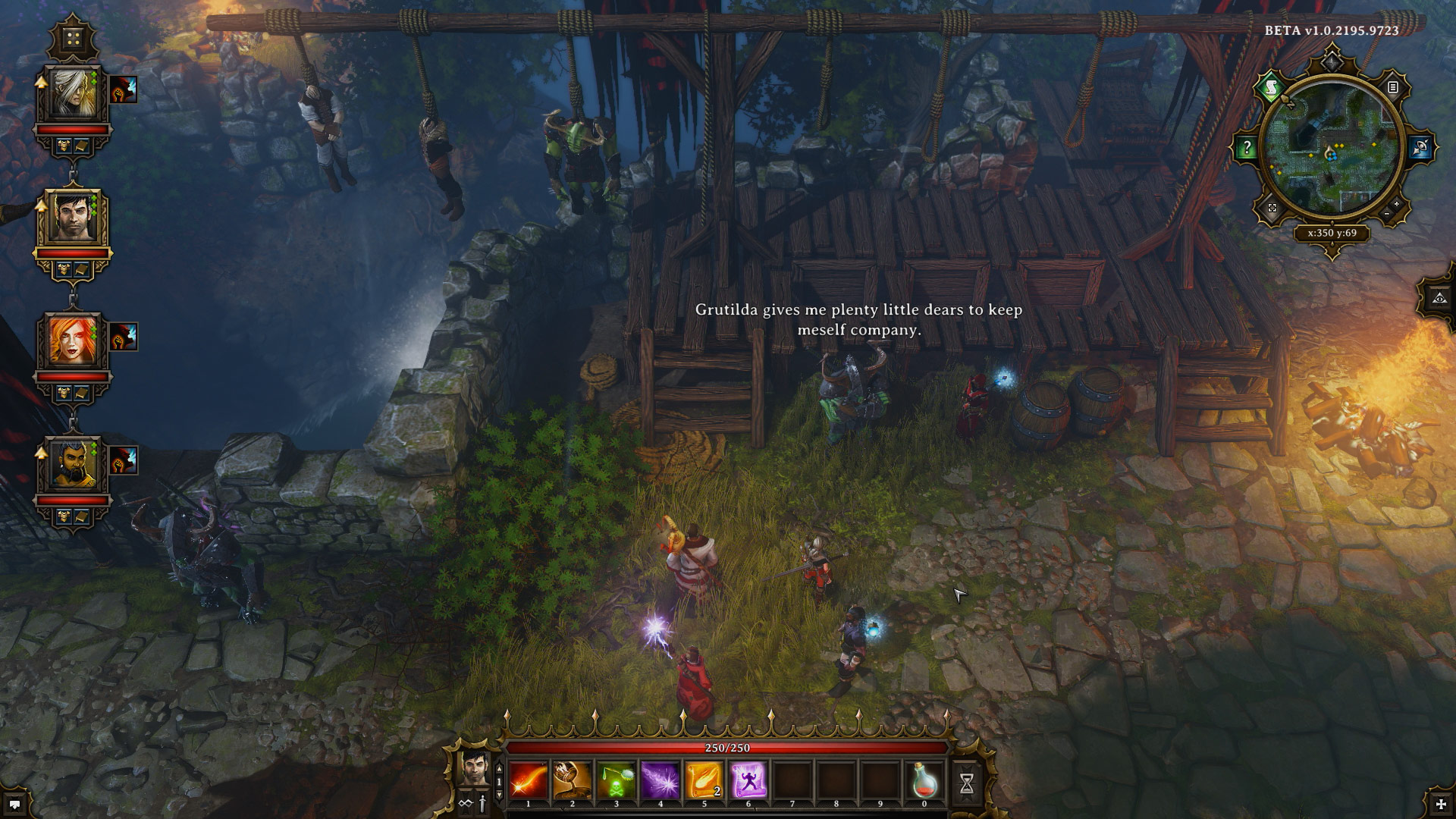
The orcish sense of humour isn't for everyone.
In Cyseal and surrounds alone you will encounter ghostly pirates, undead regents, orcs in mourning, and umpteen nefarious plots to unravel. To say more would be to ruin the surprises that wait around just about every corner, thanks to the inventive storytelling in Original Sin. Suffice it to say, though, that the murder plot which brings you to Cyseal turns out to be part of a much bigger, more sinister conspiracy that will take you much farther afield.
On your journey, you will also uncover more about the strange origins of your character, and his role in a conflict stretching back to the very inception of the universe. Yes, it's suitably epic stuff.
Players who have played the previous Divinity games will, unsurprisingly, get a lot more out of the story than newcomers, but Original Sin actually predates most of the other game in the series, with the exception of Divinity Dragon Commander. Newcomers need not fear that they will be going in without knowing a whole lot of crucial backstory.
Characters
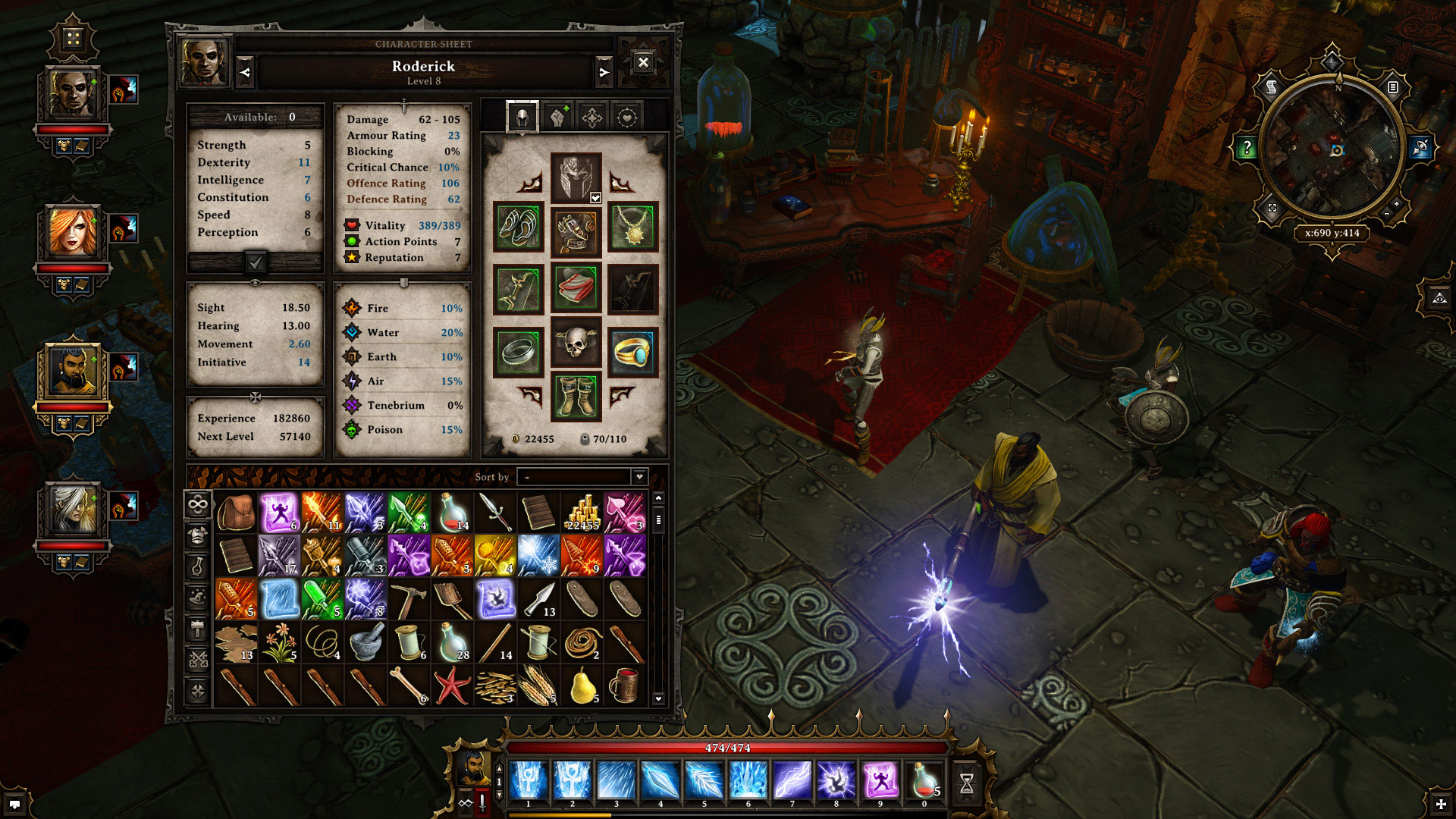
If you can see it, you can usually stuff it into your inventory.
Apart from not being able to choose the vocation of your character, she is basically blank slates for you to write upon. Is your character romantic or pragmatic, independent or obedient, forgiving or vindictive? It’s up to you. And if you roleplay your character in a consistent way you will find that their traits reflect begin to reflect your vision of that character. Traits, in turn, connect to skills: A pragmatist, for example, is better at crafting, while an egotist is better at bartering.
A short while into your adventure, you will come across recruitable companions. I wish I could say that these companions had deep, enthralling backstories, but they do just don’t. Sure, they’ll chime in every now and then with commentary on what you have said or done, and that’s great, but don’t expect anything resembling the character-specific questlines of Dragon Age or Mass Effect.
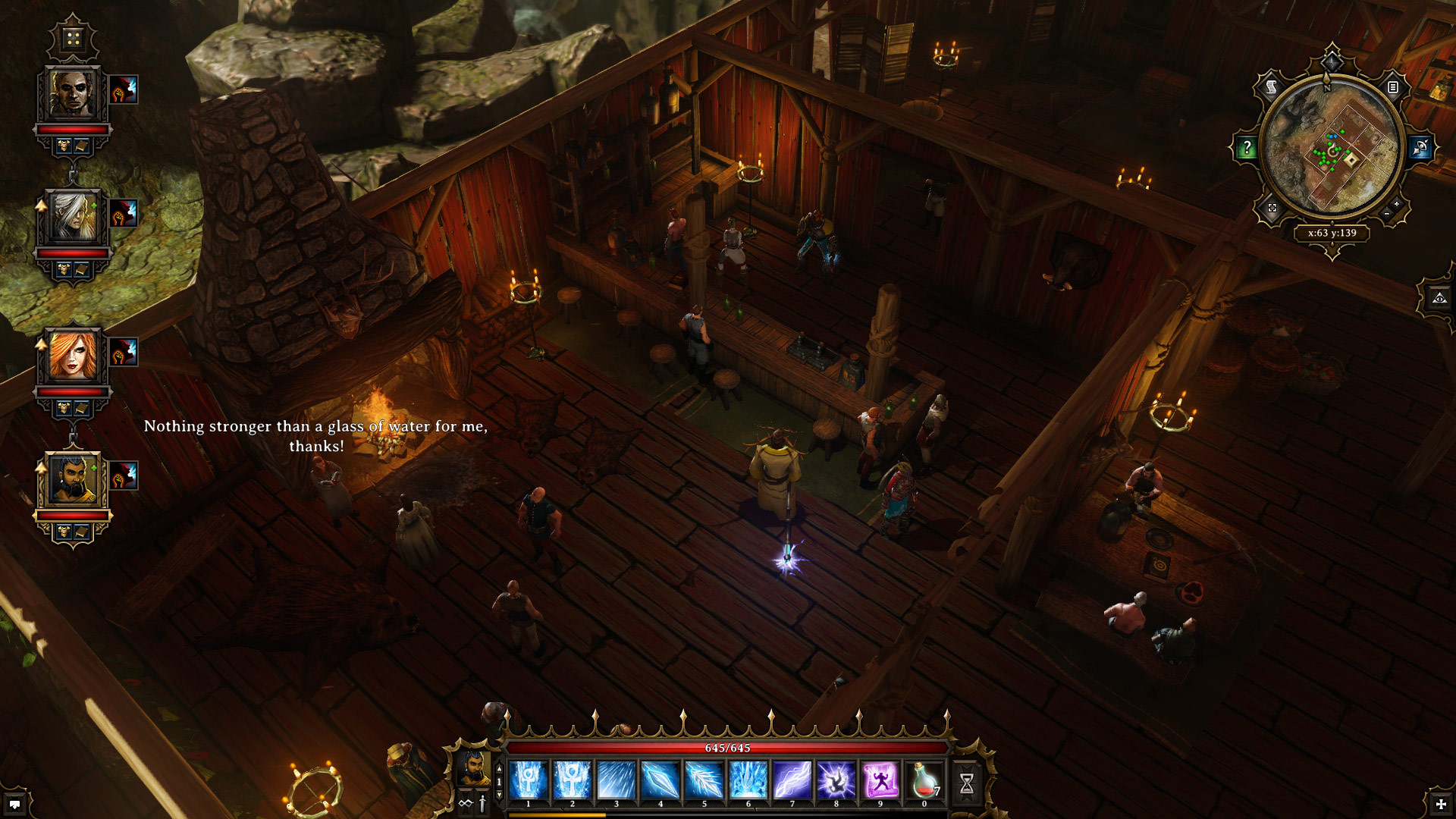
The tavern, well-worn RPG mainstay, is well executed here.
When it comes to non-playable characters, however, there is quite a bit of depth to go around. In keeping with the “figure it out yourself” philosophy inherent in Original Sin’s game design, NPCs will not simply divulge their entire life’s story to passer-by who selects the appropriate option from their dialogue trees. If you want to learn about a certain character, then you’re going to have to dig; literally and metaphorically. Are you suspicious that Romeo von Catalfuque might have nicked his best friend and long-time business partner’s brooch after the latter shed this mortal coil? Pick up a spade and head to the cemetery: You may well find the answer there. Want to know whether a particular garment of clothing belongs to a rumoured adulterer? Maybe some kind of four-legged creature with a strong sense of smell could help you out…
Observant players will find journals, snippets of dialogue, environmental clues, and a whole heap of other bits and pieces to shed a light on any character you happen to be curious about—and you will be very curious about some of them.
World
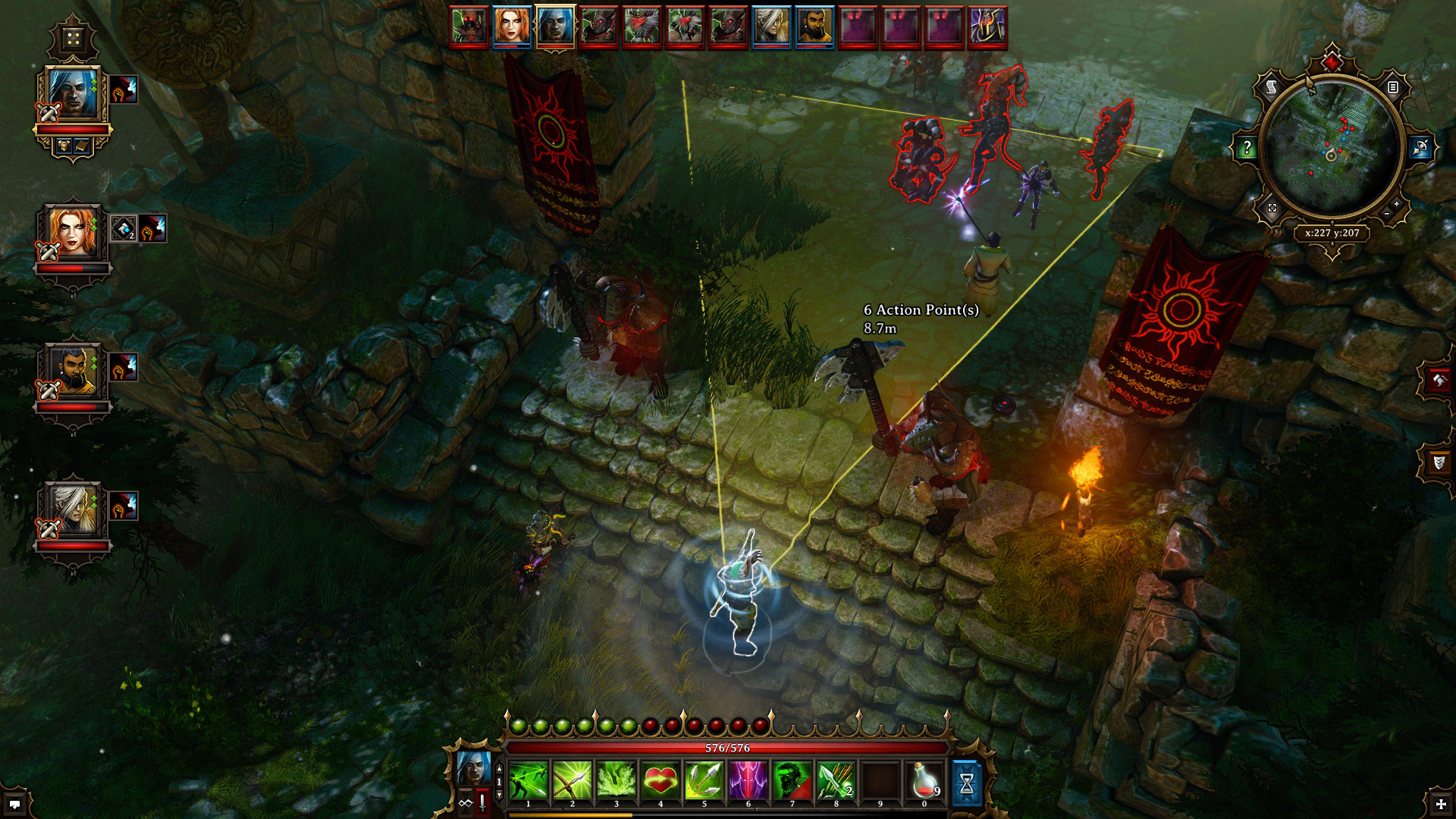
You will frequently be outnumbered—just don't be outplayed.
The world of Divinity Original Sin is lush and bursting with colour; recalling RPGs of yore, such as Secret of Mana and the aforementioned Ultima VII, with its vibrant colour scheme. It’s certainly a welcome change from the washed out brown/grey colour palettes of a lot of recent titles, and it suits the somewhat-whimsical tone of the game’s writing.
Environments range from war-ravaged coastal towns surrounded by woodland and farms to impossible pocket dimensions suspended above the void by unknown magics. And while none of the game’s individual zones are terribly large in terms of square kilometres, they are extraordinarily dense. Taking a shovel to that odd-looking mound of dirt near the old falconer’s cottage might reveal a labyrinthine larder infested with well-fed zombies; following a cat might lead you to a well-hidden back alley where the town’s residents often forget to lock their doors or windows. Sometimes, a nondescript-looking rug hides the entrance to a dungeon with traps as fiendish as its treasures are precious.
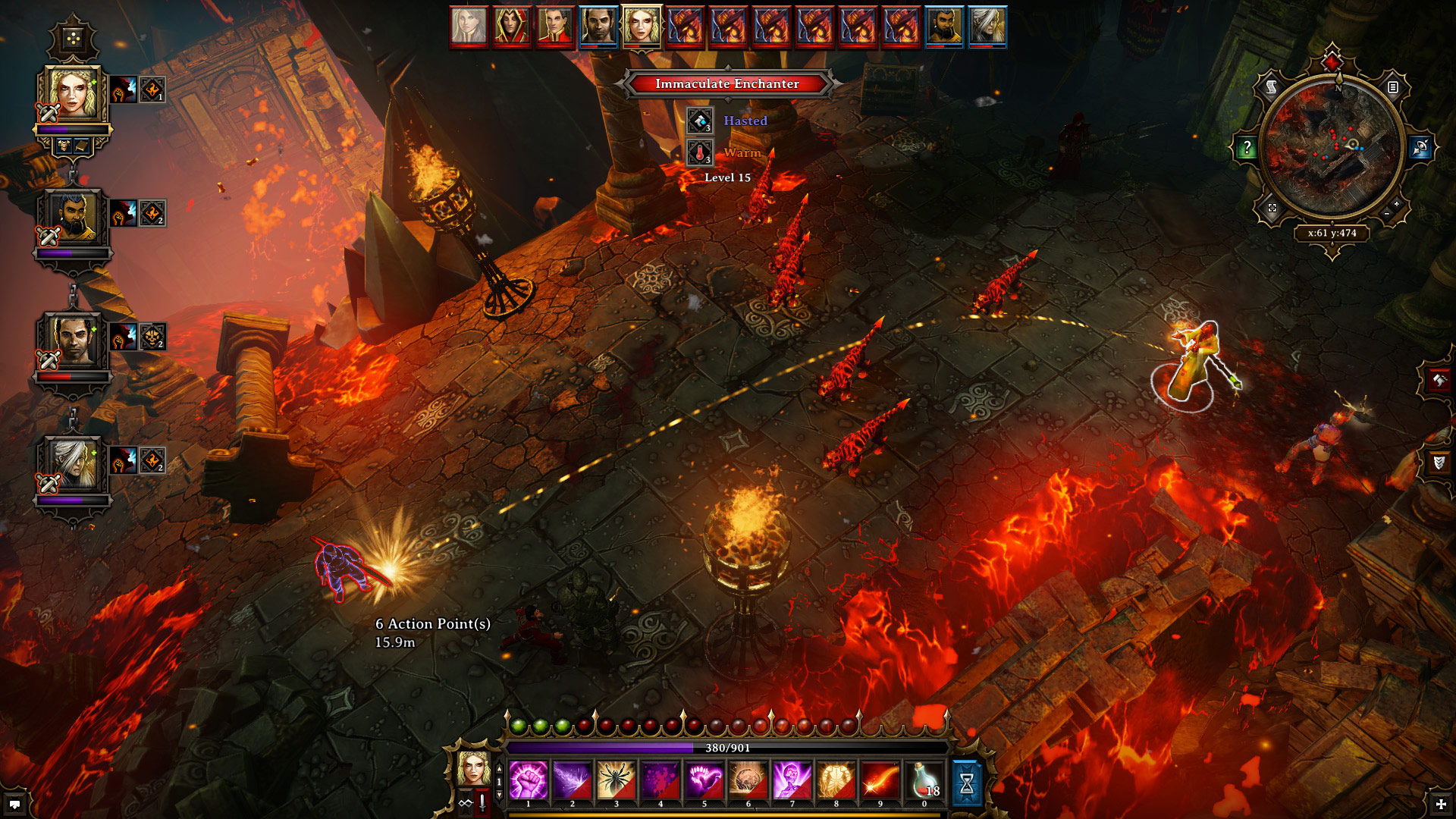
And this is why a party consisting of nothing but fire mages might not be the best idea.
The density of Original Sin’s world, and the inventive, often highly-amusing things one finds tucked into just about every nook and cranny not only shows how much passion and effort Larian poured into crafting the world, but creates a strong desire in the player to keep exploring—often well past bed time!
Graphics
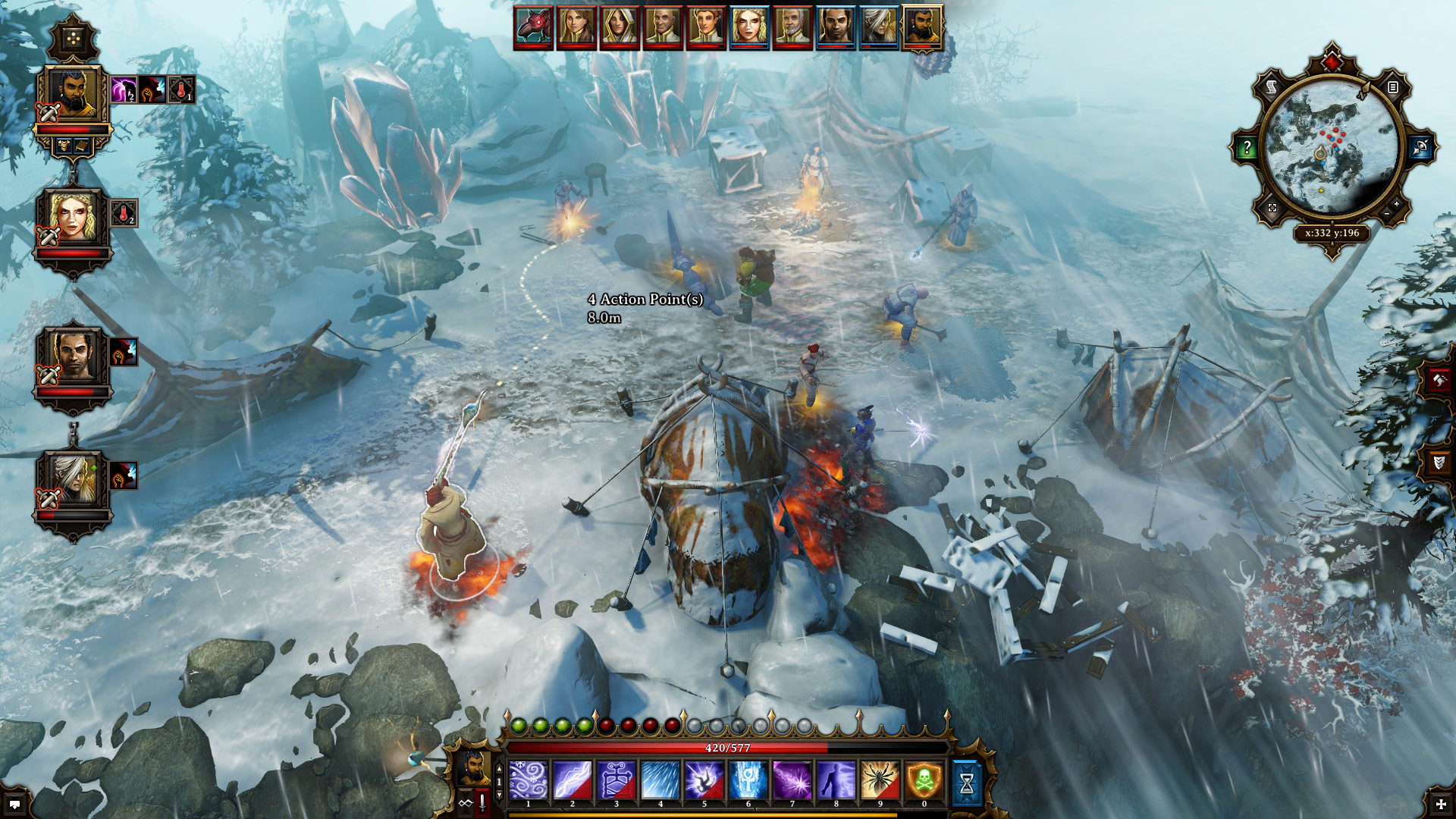
You might want some fire mages here, though.
Geometrically speaking, Original Sin is pretty basic. Characters and objects in the environment look somewhat angular and blocky, especially when viewed up close; making you more grateful for the isometric viewpoint. And yet, Original Sin is an extremely handsome game. The individual building blocks may be basic, but they combine to create stunningly detailed environments.
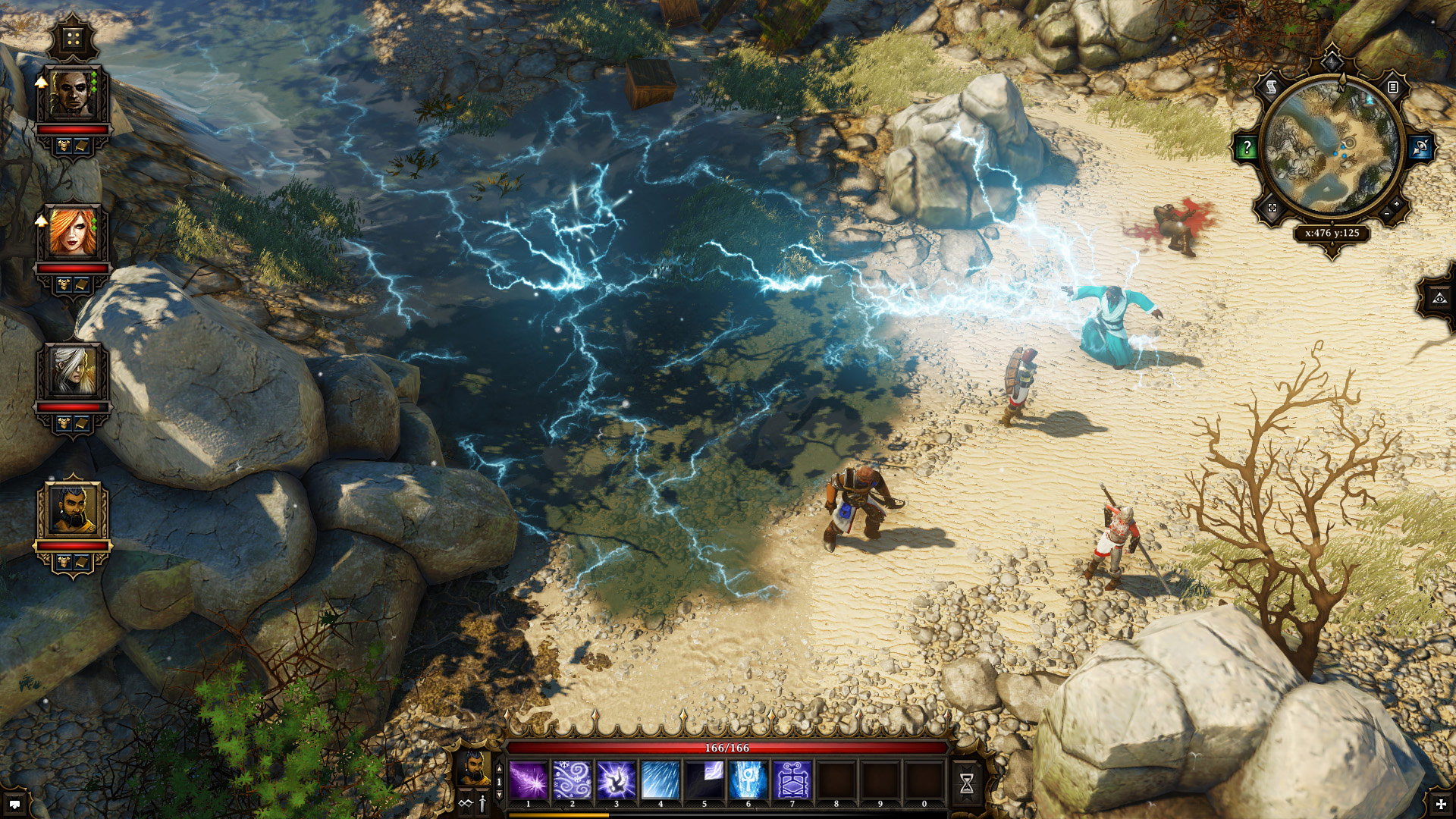
The tendency to show off is prevalent among mage types.
From the very moment your characters step forth into the game world of Rivellon, the seashell-strewn white sand pockmarked with rock pools as well as the gently lapping waves behind you is breathtaking. And later environments feel like they have had an equal amount of care spent on them, such that even dungeons are more beautiful than they have any right to be—to say nothing of idyllic forests and entrancing icescapes that you encounter later in the game.
Larian’s excellent art design, along with their clever use of lighting and particle effects are largely responsible for producing a game that will run on just about any PC, but still looks more gorgeous than a lot of the most resource-hogging games.
Gameplay
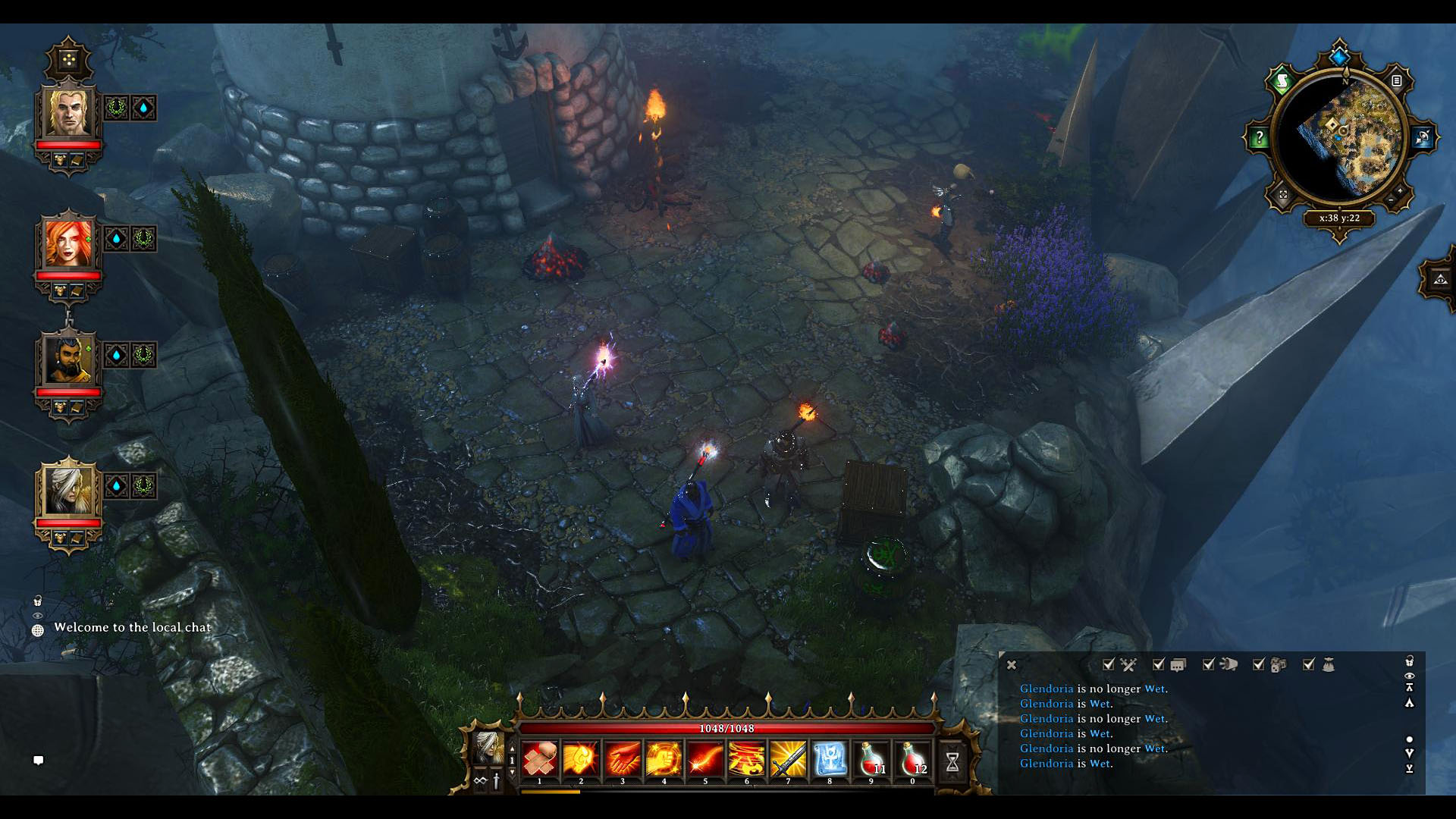
Lighthouses are right behind old mansions on the creepiness scale.
Original Sin’s combat system will be immediately familiar to anyone who has played Blackguards or XCOM — although Original Sin’s approach is much more forgiving than both. When battle breaks out, each of the player’s characters (or “units”) is allocated a certain number of points based on their stats, equipment, and so on. Every action that a given unit takes at the player’s behest will consume these points. When all the points have been consumed, the unit can no longer act for that round of the battle. After each unit has exhausted the points available to them, or the player elects to “pass” their turn, the AI’s turn begins.
So far, so standard, but where the combat system of Original Sin really distinguishes itself from other turn-based, isometric RPGs is in its implementation of environmental effects and interactions that can radically alter the battlefield in either helpful or hindering ways. Firing an arrow into an oil barrel creates a slick on the grounds that can then be set alight by that candle you had tucked away in your inventory. Anything caught in the flames is likely to be burnt to a crisp, and the wall of smoke that issues from it will screen you from the eyes of enemy archers. Once the inferno has served its purpose you might decide that it’s time to whip out that rain scroll and summon a downpour to extinguish the flames. The fire put out, you might decide to rush forth and dispatch those archers before they can make human pincushions of your units. Oops, it looks like you didn’t notice the mage lurking just outside of your party’s sight range; lightning bolts shoot out from his fingers, but he’s not targeting your characters directly, but rather, the cloud of steam that was produced when you put the fire out. The steam cloud turns into a localized thunder cloud and all your characters are paralysed by surging electricity.
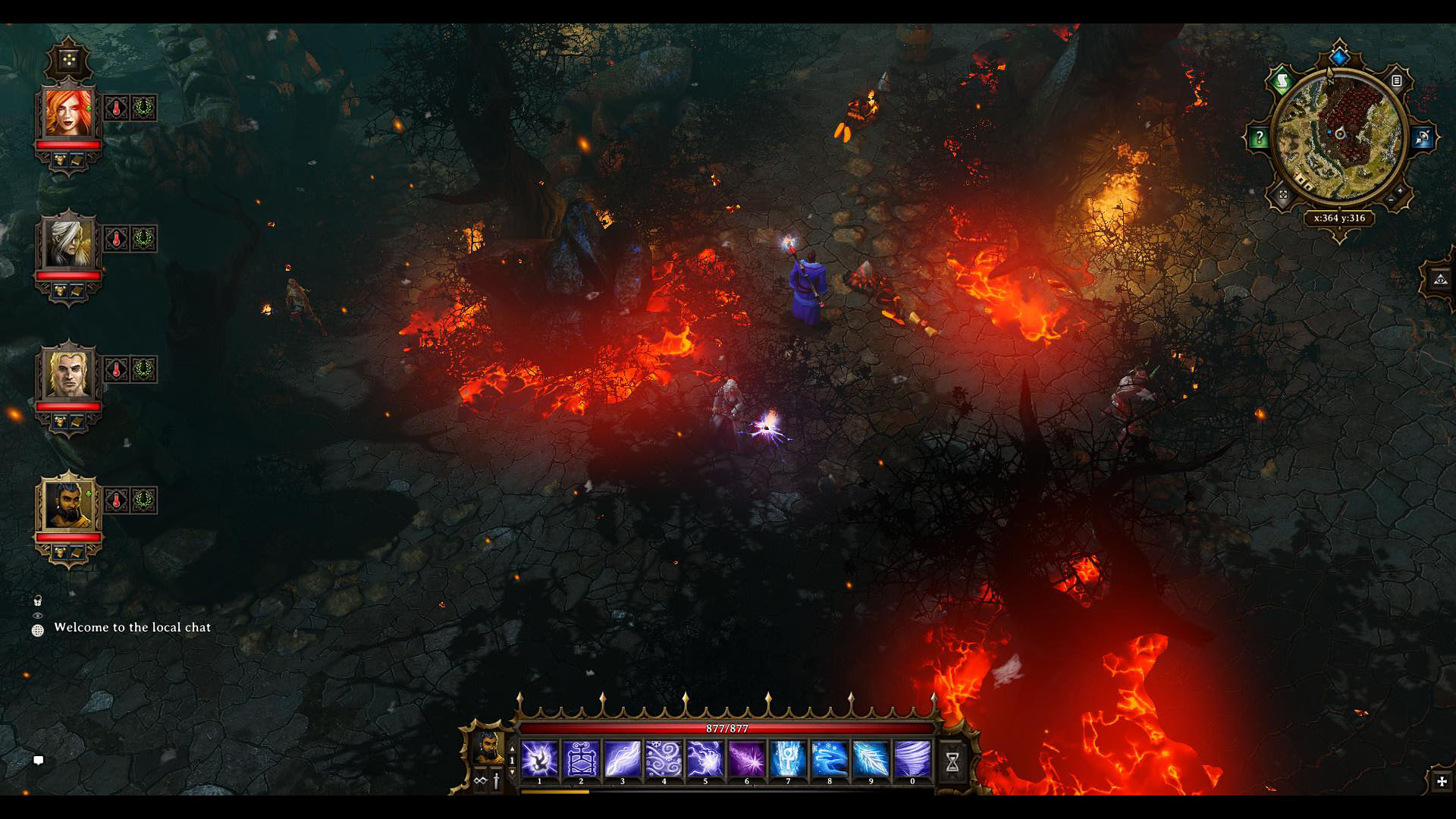
A bad time of year for a vacation in the countryside.
Looks like your people are going to be archer fodder after all.
The above is only a small window into the sort of chaos that an Original Sin battlefield usually plays host to, and Larian deserve all praise for creating such a robust system. Imaginative players will delight in finding the best combinations of spells, items, weapons, and so on to make the most of the environmental interactions in the game — after all, these interactions are more often than not the key to victory against some of the game’s tougher opponents.
One player might, for instance, spend his experience points on creating a mage who specializes in fire spells. By taking the “elemental affinity” talent at level up, the player’s fire mage will have the cost of all her fire spells reduced when she stands on any flaming surface — meaning that she can cast more spells, more often. Of course, fire mage or not, standing on a flaming surface is generally hazardous to one’s health, so the player decides to outfit his fire mage in enough fire-resistance gear to make her completely immune to fire damage. Now all the player has to do is find or create a hot little spot somewhere on the battlefield, have his mage summon a fire elemental to ensure that said spot remains alight (fire elements tend to have this effect in the game), and have her cast to her heart’s content. Not only his is fire mage now a more deadly spell-slinger, but the flames in which she wreathes herself will provide a nice deterrent to close-range attackers who like beating up on squishy magic users.
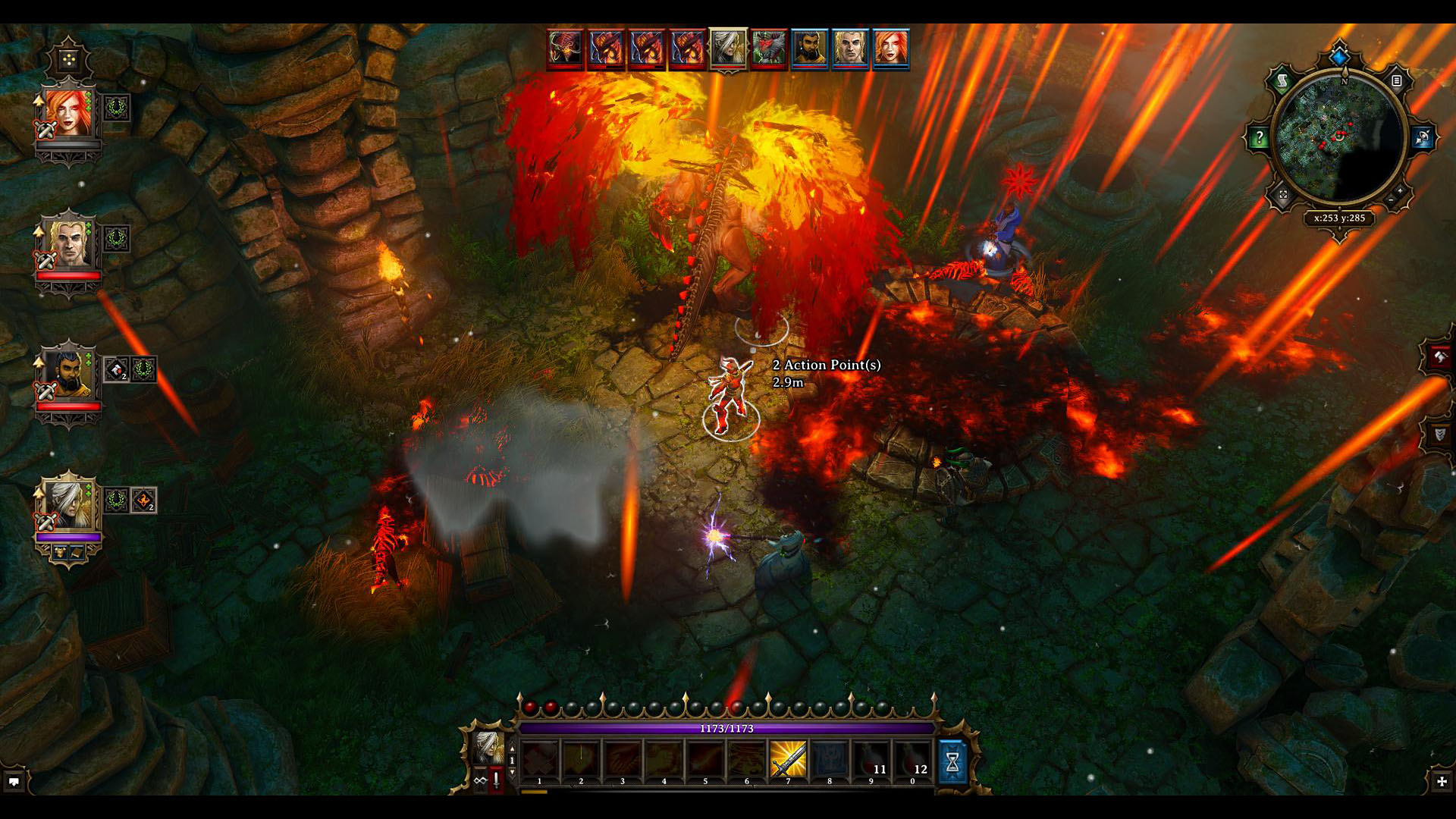
This guy probably isn't going down without a fight.
One of the best things, though, is that traits, skills, and talents are not limited to useful in battle alone. In fact, some talents and skills aren’t useful in battle at all! Bartering, for instance, allows you to buy and sell items for better prices while Crafting allows you to make foodstuffs, weapons, potions, and other assorted bits and ends. A talent like Pet Pal serves no other purpose than to grant you Dr. Doolittle-like powers of animal communication; you’d be surprised, though, how much the rats and cats of Original Sin know about what’s going on…
Price
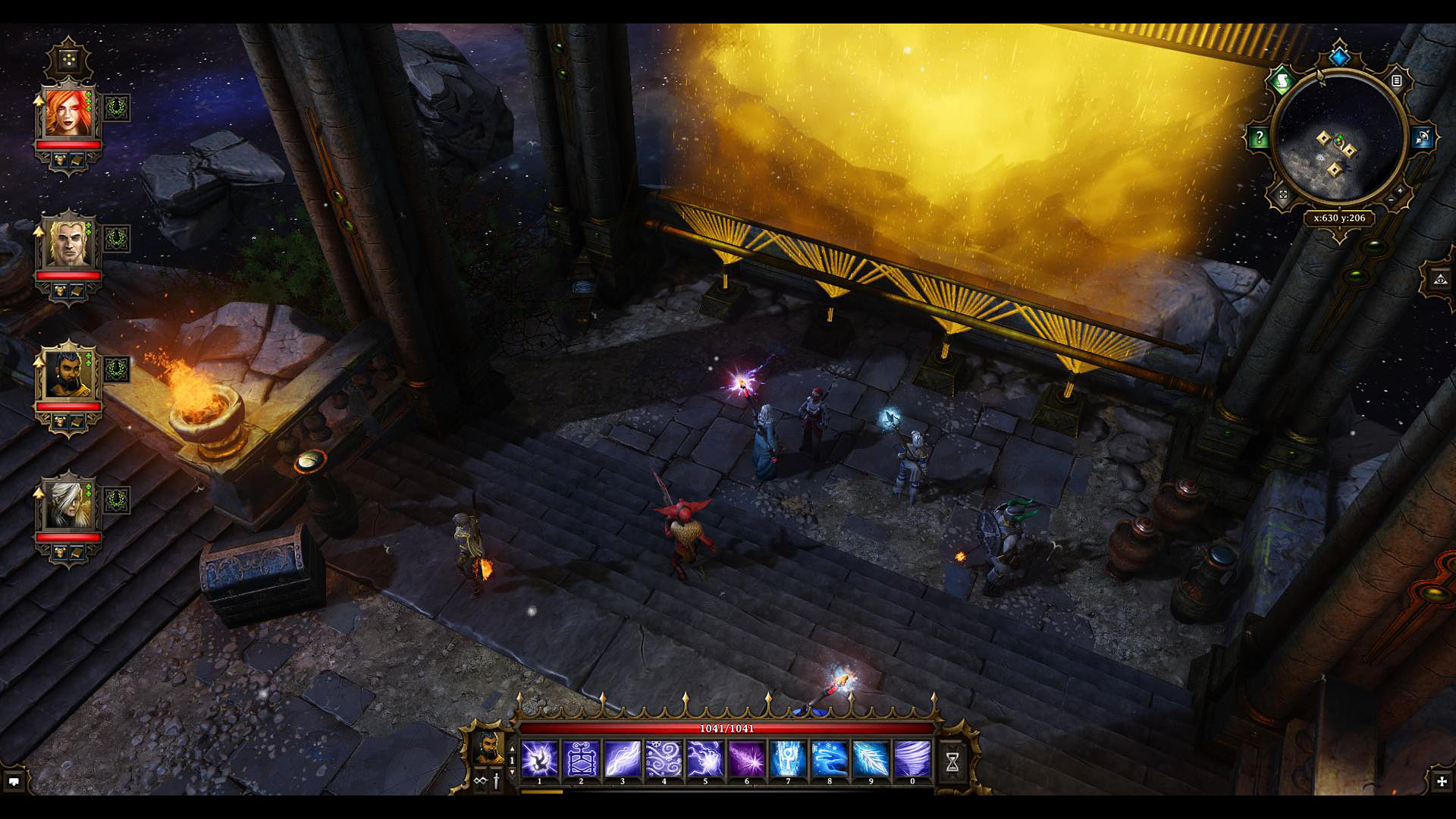
Not a bad place to call home, eh?
The standard edition of Original Sin retails for $39.99 USD on Steam. The Digital Collector’s Edition retails for $69.99 and includes all the DLC for Original Sin, as well as the first two entries in the Divinity series: Beyond Divinity and Divine Divinity. Oh, and best of all, it includes an additional copy of the game, so it’s definitely worth paying a little bit extra if you plan on playing Original Sin cooperatively with a friend, and/or you do not already own Divine Divinity and Beyond Divinity.
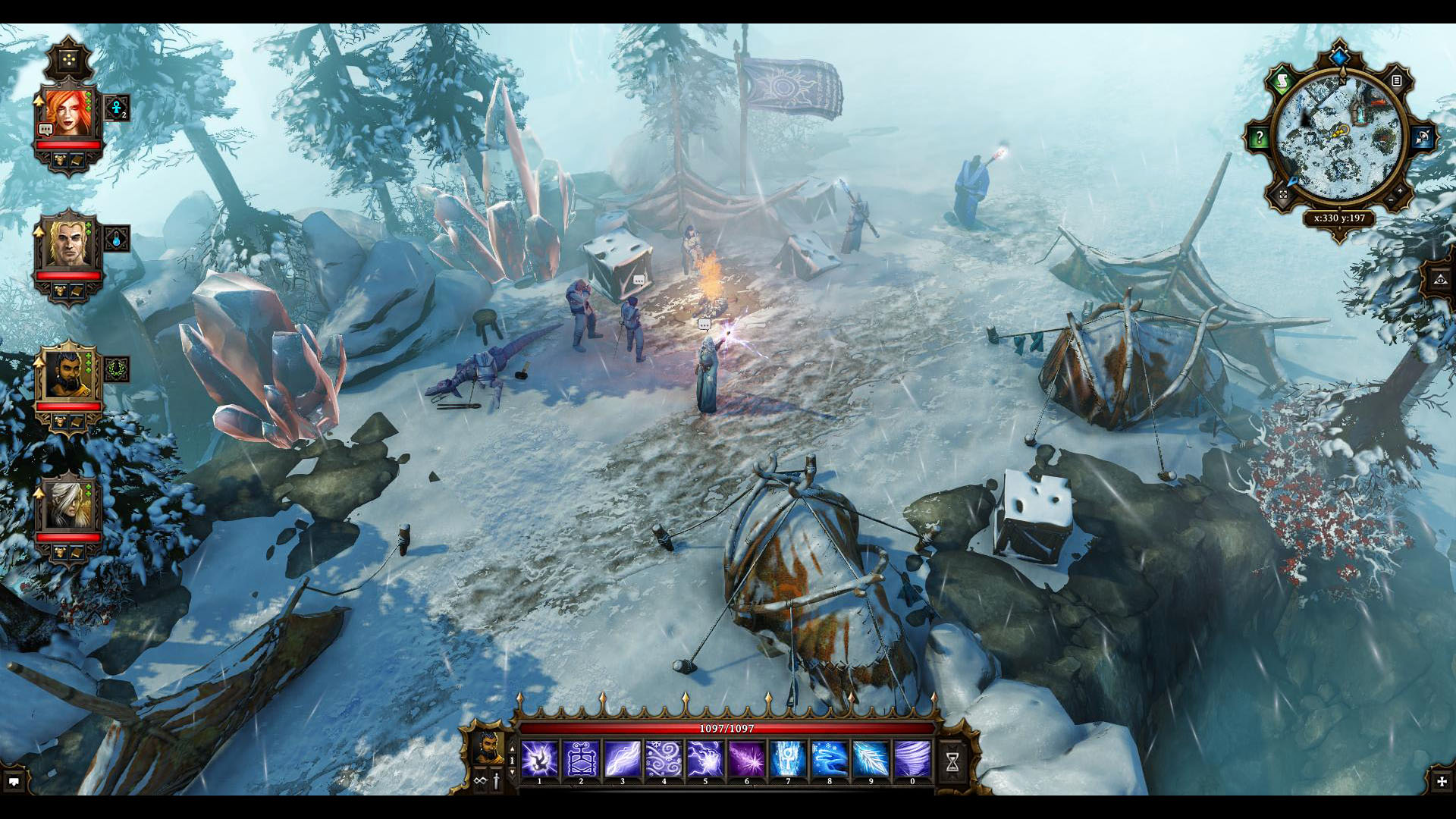
Icy wastelands never looked so pretty.
It’s also worth mentioning at this point that Larian are planning releasing an Enhanced Edition of the game some time later this year. The Enhanced Edition is supposed to have updated visuals, local coop, controller support, fully-voiced characters, and a reworked story (including a new ending); but you needn’t fret, because the Enhanced Edition will be available to all existing owners of Original Sin when it launches!
Verdict
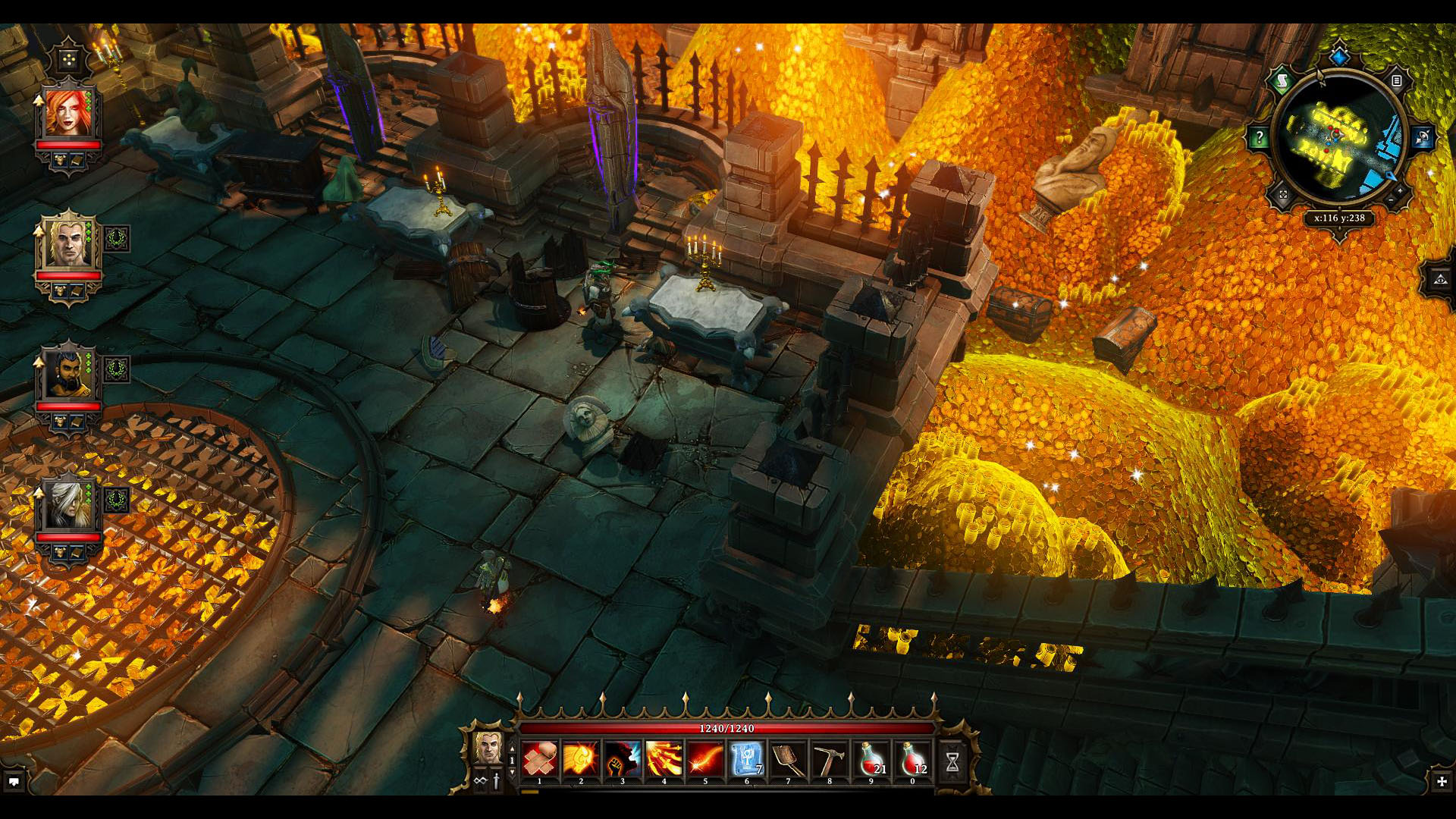
Perhaps just a little ostentious.
Barring a couple of caveats that I will get to in a moment, Divinity Original Sin is an RPG that I would heartily recommend to anyone with even a passing interest in the genre. It’s big, it’s beautiful, and an absolute blast to play alone or with a friend.
But while I would not, as others have, suggest that this Original Sin is exclusively a game for old-school RPG players—because I think it has so much more to offer than mere nostalgia—I can certainly foresee some gamers experiencing frustration with the very aspects of the game that have made it such a hit with the RPG old guard.
The first of these is the lack of hand-holding in the game. Nowadays, even “open world” RPGs like Fallout 3 and Skyrim go to great pains to remove any ambiguity regarding what the player is expected to do next if she wants to advance the main story. Specific quest objectives are spelled out in log books and journals, or displayed directly on screen, and there are usually markers of some sort pointing the way to said objectives. Original Sin has none of these things, and for very good reason: It doesn’t want to tell you how to go about doing whatever it is you want to do. For players who aren’t used to games providing constant feedback about what it is they should be doing, and/or they happen not to pay attention to the information the game does provide, the whole experience will likely seem very confusing indeed.
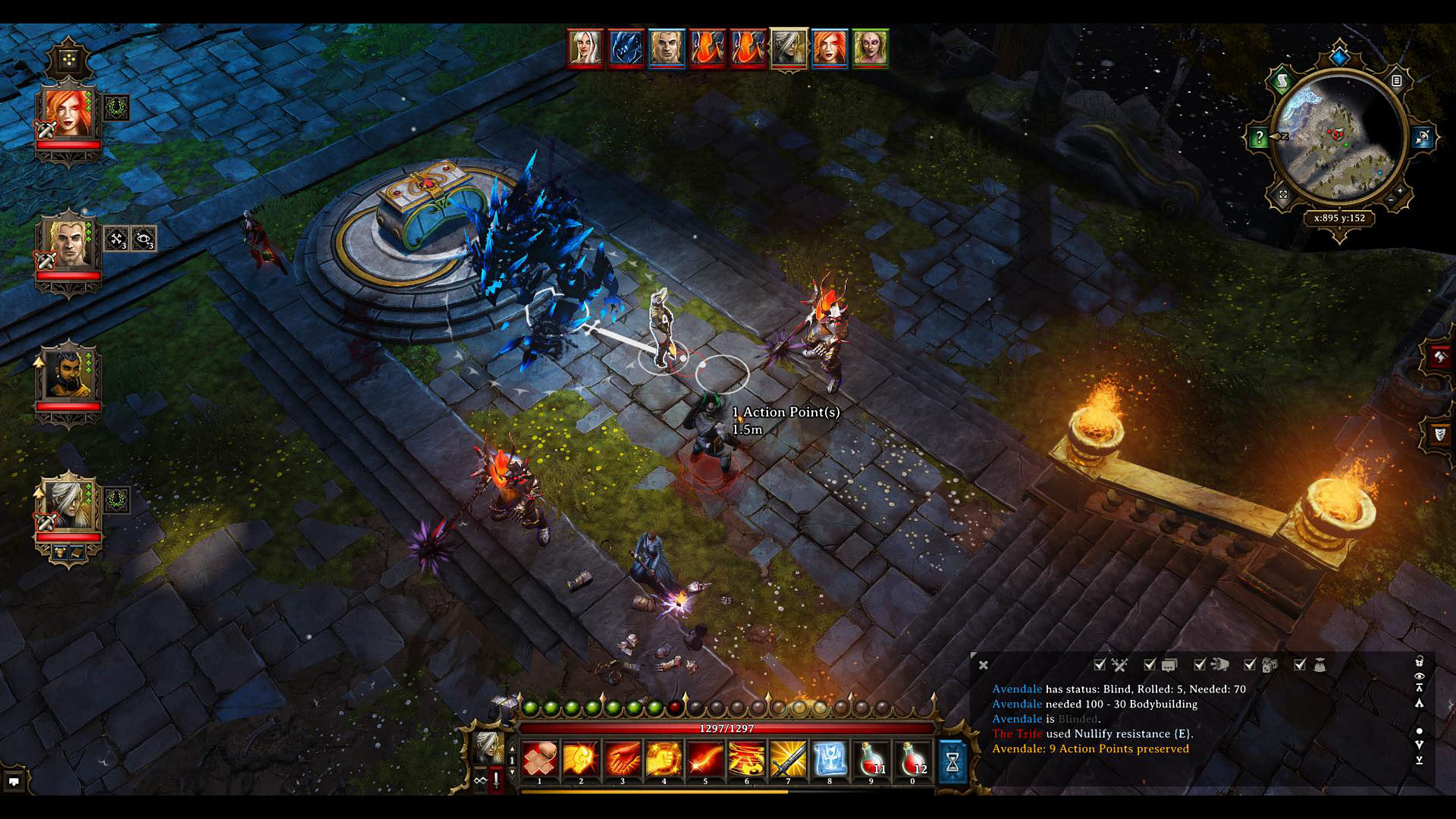
It won't only be the monsters defending their loot from you.
Secondly, I personally know a lot of gamers who immediately dismissed Original Sin as a “Diablo clone”, merely because of the isometric camera. The reason for this is simple enough: It has been a good long while since the last big isometric RPG, whereas we have had more than a few Diablo-esque games in the interim, along with a third entry in the Diablo series itself. And while it won’t take long for this impression to be dispelled by anyone who actually takes the trouble to play the game, I still anticipate that a lot of modern gamers in particular will find the top-down perspective less engaging or immersive than the third-and-first person games they are accustomed to.
“Accustomed” is, I believe, the key word here, though. Neither of the caveats I just mentioned concern flaws in the game, and with a little persistence I believe that any genuine fan of RPGs will learn to not only adapt to them, but to love them. And from there, I have little doubt that they will love the game itself.
Final verdict: 9/10
Trailers
Just some of Original Sin’s many gameplay features.
See? I’m not the only one who likes it.
It’s about to get even better…
